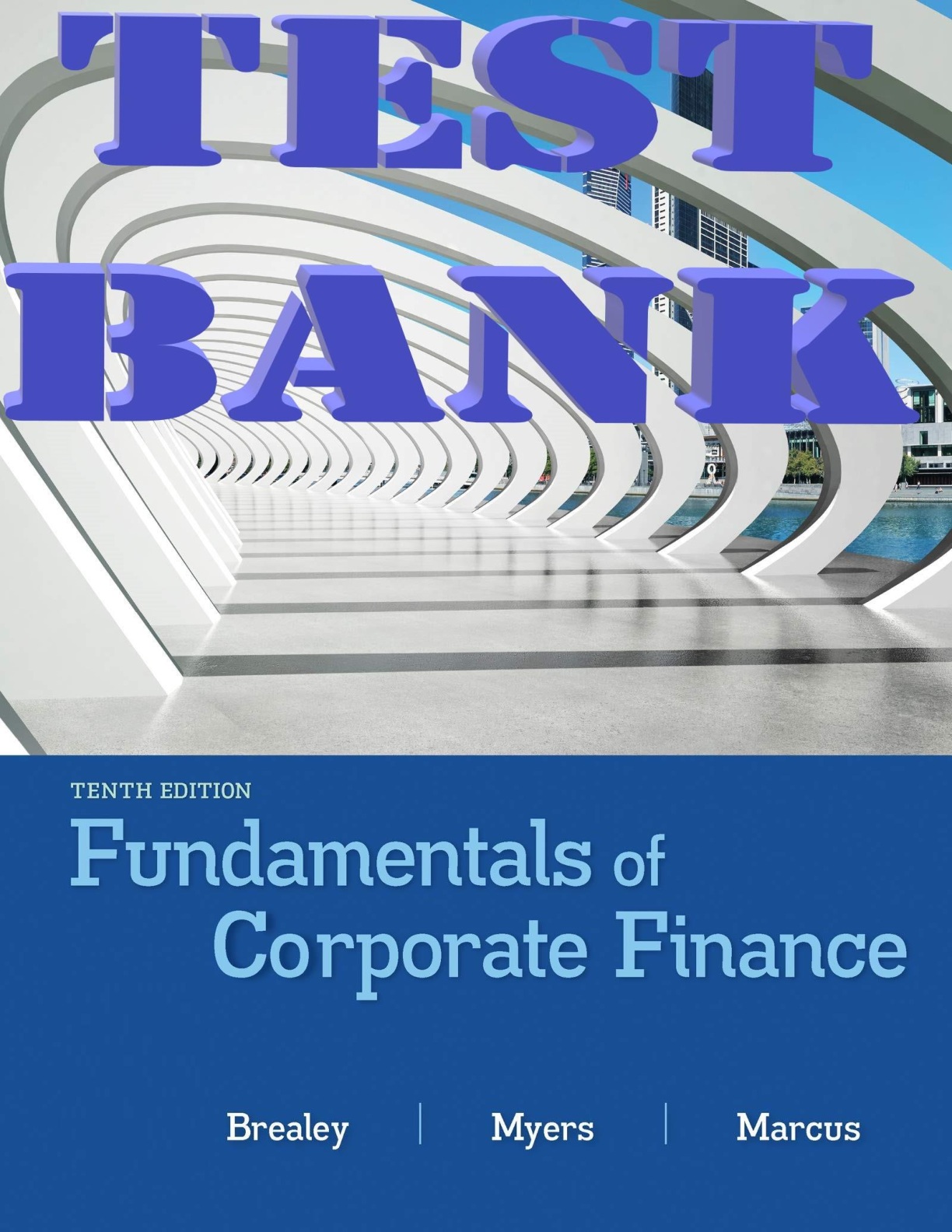Corporate Finance, 5E by Berk Test Bank
Document Content and Description Below
Test Bank for Corporate Finance, 5E, 5th Edition by Jonathan Berk,Peter DeMarzo TEST BANK ISBN-13: 9780135161081 Full chapters included Part 1 Introduction Chapter 1 The Corporation and Financia... l Markets 1.1 The Four Types of Firms Sole Proprietorships Partnerships Limited Liability Companies Corporations Tax Implications for Corporate Entities Corporate Taxation Around the World 1.2 Ownership Versus Control of Corporations Interview with David Viniar The Financial Manager Global Financial Crisis The Dodd-Frank Act The Goal of the Firm The Firm and Society Ethics and Incentives within Corporations Global Financial Crisis The Dodd-Frank Act on Corporate Compensation and Governance Citizens United v. Federal Election Commission Airlines in Bankruptcy 1.3 The Stock Market Primary and Secondary Stock Markets Traditional Trading Venues Interview with Frank Hatheway New Competition and Market Changes Dark Pools 1.4 Fintech: Finance and Technology Telecommunications Security and Verification Automation of Banking Services Big Data and Machine Learning Competition MyLab Finance Key Terms Further Reading Problems Chapter 2 Introduction to Financial Statement Analysis 2.1 Firms’ Disclosure of Financial Information Preparation of Financial Statements International Financial Reporting Standards Interview with Ruth Porat Types of Financial Statements 2.2 The Balance Sheet Assets Liabilities Stockholders’ Equity Market Value Versus Book Value Enterprise Value 2.3 The Income Statement Earnings Calculations 2.4 The Statement of Cash Flows Operating Activity Investment Activity Financing Activity 2.5 Other Financial Statement Information Statement of Stockholders’ Equity Management Discussion and Analysis Notes to the Financial Statements 2.6 Financial Statement Analysis Profitability Ratios Liquidity Ratios Working Capital Ratios Interest Coverage Ratios Leverage Ratios Valuation Ratios Common Mistake Mismatched Ratios Operating Returns The DuPont Identity 2.7 Financial Reporting in Practice Enron WorldCom Sarbanes-Oxley Act Global Financial Crisis Bernard Madoff’s Ponzi Scheme Dodd-Frank Act MyLab Finance Key Terms Further Reading Problems Data Case Chapter 3 Financial Decision Making and the Law of One Price 3.1 Valuing Decisions Analyzing Costs and Benefits Using Market Prices to Determine Cash Values When Competitive Market Prices Are Not Available 3.2 Interest Rates and the Time Value of Money The Time Value of Money The Interest Rate: An Exchange Rate Across Time 3.3 Present Value and the NPV Decision Rule Net Present Value The NPV Decision Rule NPV and Cash Needs 3.4 Arbitrage and the Law of One Price Arbitrage Law of One Price 3.5 No-Arbitrage and Security Prices Valuing a Security with the Law of One Price An Old Joke The NPV of Trading Securities and Firm Decision Making Valuing a Portfolio Global Financial Crisis Liquidity and the Informational Role of Prices Arbitrage in Markets Where Do We Go from Here? Appendix The Price of Risk Risky Versus Risk-Free Cash Flows Arbitrage with Transactions Costs MyLab Finance Key Terms Further Reading Problems Data Case Part 2 Time, Money, and Interest Rates Chapter 4 The Time Value of Money 4.1 The Timeline 4.2 The Three Rules of Time Travel Rule 1: Comparing and Combining Values Rule 2: Moving Cash Flows Forward in Time Rule 3: Moving Cash Flows Back in Time Rule of 72 Applying the Rules of Time Travel 4.3 Valuing a Stream of Cash Flows 4.4 Calculating the Net Present Value Using Excel Calculating Present Values in Excel 4.5 Perpetuities and Annuities Perpetuities Historical Examples of Perpetuities Common Mistake Discounting One Too Many Times Annuities Formula for an Annuity Due Growing Cash Flows 4.6 Using an Annuity Spreadsheet or Calculator 4.7 Non-Annual Cash Flows 4.8 Solving for the Cash Payments 4.9 The Internal Rate of Return Using Excel Excel’s IRR Function Appendix Solving for the Number of Periods MyLab Finance Key Terms Further Reading Problems Data Case Chapter 5 Interest Rates 5.1 Interest Rate Quotes and Adjustments The Effective Annual Rate Common Mistake Using the Wrong Discount Rate in the Annuity Formula Annual Percentage Rates 5.2 Application: Discount Rates and Loans 5.3 The Determinants of Interest Rates Global Financial Crisis Teaser Rates and Subprime Loans Inflation and Real Versus Nominal Rates Investment and Interest Rate Policy The Yield Curve and Discount Rates The Yield Curve and the Economy Common Mistake Using the Annuity Formula When Discount Rates Vary by Maturity Interview with Dr. Janet Yellen 5.4 Risk and Taxes Risk and Interest Rates After-Tax Interest Rates 5.5 The Opportunity Cost of Capital Common Mistake States Dig a Multi-Trillion Dollar Hole by Discounting at the Wrong Rate Appendix Continuous Rates and Cash Flows Discount Rates for a Continuously Compounded APR Continuously Arriving Cash Flows MyLab Finance Key Terms Further Reading Problems Data Case Chapter 6 Valuing Bonds 6.1 Bond Cash Flows, Prices, and Yields Bond Terminology Zero-Coupon Bonds Global Financial Crisis Negative Bond Yields Coupon Bonds 6.2 Dynamic Behavior of Bond Prices Discounts and Premiums Time and Bond Prices Interest Rate Changes and Bond Prices Clean and Dirty Prices for Coupon Bonds 6.3 The Yield Curve and Bond Arbitrage Replicating a Coupon Bond Valuing a Coupon Bond Using Zero-Coupon Yields Coupon Bond Yields Treasury Yield Curves 6.4 Corporate Bonds Corporate Bond Yields Are Treasuries Really Default-Free Securities? Bond Ratings Corporate Yield Curves 6.5 Sovereign Bonds Global Financial Crisis The Credit Crisis and Bond Yields Global Financial Crisis European Sovereign Debt Yields: A Puzzle Interview with Carmen M. Reinhart Appendix Forward Interest Rates Computing Forward Rates Computing Bond Yields from Forward Rates Forward Rates and Future Interest Rates MyLab Finance Key Terms Further Reading Problems Data Case Case Study Part 3 Valuing Projects and Firms Chapter 7 Investment Decision Rules 7.1 NPV and Stand-Alone Projects Applying the NPV Rule The NPV Profile and IRR Alternative Rules Versus the NPV Rule Interview with Dick Grannis 7.2 The Internal Rate of Return Rule Applying the IRR Rule Pitfall #1: Delayed Investments Pitfall #2: Multiple IRRs Common Mistake IRR Versus the IRR Rule Pitfall #3: Nonexistent IRR 7.3 The Payback Rule Applying the Payback Rule Payback Rule Pitfalls in Practice Why Do Rules Other Than the NPV Rule Persist? 7.4 Choosing between Projects NPV Rule and Mutually Exclusive Investments IRR Rule and Mutually Exclusive Investments The Incremental IRR When Can Returns Be Compared? Common Mistake IRR and Project Financing 7.5 Project Selection with Resource Constraints Evaluating Projects with Different Resource Requirements Profitability Index Shortcomings of the Profitability Index Appendix Computing the NPV Profile Using Excel’s Data Table Function MyLab Finance Key Terms Further Reading Problems Data Case Chapter 8 Fundamentals of Capital Budgeting 8.1 Forecasting Earnings Revenue and Cost Estimates Incremental Earnings Forecast Indirect Effects on Incremental Earnings Common Mistake The Opportunity Cost of an Idle Asset Sunk Costs and Incremental Earnings Common Mistake The Sunk Cost Fallacy Real-World Complexities 8.2 Determining Free Cash Flow and NPV Calculating Free Cash Flow from Earnings Calculating Free Cash Flow Directly Calculating the NPV Using Excel Capital Budgeting Using Excel 8.3 Choosing among Alternatives Evaluating Manufacturing Alternatives Comparing Free Cash Flows for Cisco’s Alternatives 8.4 Further Adjustments to Free Cash Flow Interview with David Holland 8.5 Analyzing the Project Break-Even Analysis Common Mistake Corporate Tax Rates and Investment Sensitivity Analysis Scenario Analysis Using Excel Project Analysis Using Excel Appendix MACRS Depreciation MyLab Finance Key Terms Further Reading Problems Data Case Chapter 9 Valuing Stocks 9.1 The Dividend-Discount Model A One-Year Investor Dividend Yields, Capital Gains, and Total Returns The Mechanics of a Short Sale A Multiyear Investor The Dividend-Discount Model Equation 9.2 Applying the Dividend-Discount Model Constant Dividend Growth Dividends Versus Investment and Growth John Burr Williams’s Theory of Investment Value Changing Growth Rates Limitations of the Dividend-Discount Model 9.3 Total Payout and Free Cash Flow Valuation Models Share Repurchases and the Total Payout Model The Discounted Free Cash Flow Model 9.4 Valuation Based on Comparable Firms Valuation Multiples Limitations of Multiples Comparison with Discounted Cash Flow Methods Stock Valuation Techniques: The Final Word Kenneth Cole Productions—What Happened? Cryptocurrencies and Price Bubbles Interview with Susan Athey 9.5 Information, Competition, and Stock Prices Information in Stock Prices Competition and Efficient Markets Lessons for Investors and Corporate Managers The Efficient Markets Hypothesis Versus No Arbitrage MyLab Finance Key Terms Further Reading Problems Data Case Part 4 Risk and Return Chapter 10 Capital Markets and the Pricing of Risk 10.1 Risk and Return: Insights from 92 Years of Investor History 10.2 Common Measures of Risk and Return Probability Distributions Expected Return Variance and Standard Deviation 10.3 Historical Returns of Stocks and Bonds Computing Historical Returns Average Annual Returns The Variance and Volatility of Returns Estimation Error: Using Past Returns to Predict the Future Arithmetic Average Returns Versus Compound Annual Returns 10.4 The Historical Tradeoff Between Risk and Return The Returns of Large Portfolios The Returns of Individual Stocks 10.5 Common Versus Independent Risk Theft Versus Earthquake Insurance: An Example The Role of Diversification 10.6 Diversification in Stock Portfolios Firm-Specific Versus Systematic Risk No Arbitrage and the Risk Premium Global Financial Crisis Diversification Benefits During Market Crashes Common Mistake A Fallacy of Long-Run Diversification 10.7 Measuring Systematic Risk Identifying Systematic Risk: The Market Portfolio Sensitivity to Systematic Risk: Beta 10.8 Beta and the Cost of Capital Estimating the Risk Premium Common Mistake Beta Versus Volatility The Capital Asset Pricing Model MyLab Finance Key Terms Further Reading Problems Data Case Chapter 11 Optimal Portfolio Choice and the Capital Asset Pricing Model 11.1 The Expected Return of a Portfolio 11.2 The Volatility of a Two-Stock Portfolio Combining Risks Determining Covariance and Correlation Common Mistake Computing Variance, Covariance, and Correlation in Excel Computing a Portfolio’s Variance and Volatility 11.3 The Volatility of a Large Portfolio Large Portfolio Variance Diversification with an Equally Weighted Portfolio Interview with Anne Martin Diversification with General Portfolios 11.4 Risk Versus Return: Choosing an Efficient Portfolio Efficient Portfolios with Two Stocks The Effect of Correlation Short Sales Efficient Portfolios with Many Stocks Nobel Prize Harry Markowitz and James Tobin 11.5 Risk-Free Saving and Borrowing Investing in Risk-Free Securities Borrowing and Buying Stocks on Margin Identifying the Tangent Portfolio 11.6 The Efficient Portfolio and Required Returns Portfolio Improvement: Beta and the Required Return Expected Returns and the Efficient Portfolio 11.7 The Capital Asset Pricing Model The CAPM Assumptions Supply, Demand, and the Efficiency of the Market Portfolio Optimal Investing: The Capital Market Line 11.8 Determining the Risk Premium Market Risk and Beta Nobel Prize William Sharpe on the CAPM The Security Market Line Beta of a Portfolio Summary of the Capital Asset Pricing Model Appendix The CAPM with Differing Interest Rates The Efficient Frontier with Differing Saving and Borrowing Rates The Security Market Line with Differing Interest Rates MyLab Finance Key Terms Further Reading Problems Data Case Chapter 12 Estimating the Cost of Capital 12.1 The Equity Cost of Capital 12.2 The Market Portfolio Constructing the Market Portfolio Market Indexes Value-Weighted Portfolios and Rebalancing The Market Risk Premium 12.3 Beta Estimation Using Historical Returns Identifying the Best-Fitting Line Using Linear Regression Why Not Estimate Expected Returns Directly? 12.4 The Debt Cost of Capital Debt Yields Versus Returns Common Mistake Using the Debt Yield as Its Cost of Capital Debt Betas 12.5 A Project’s Cost of Capital All-Equity Comparables Levered Firms as Comparables The Unlevered Cost of Capital Industry Asset Betas 12.6 Project Risk Characteristics and Financing Differences in Project Risk Common Mistake Adjusting for Execution Risk Financing and the Weighted Average Cost of Capital Interview with Shelagh Glaser Common Mistake Using a Single Cost of Capital in Multi-Divisional Firms 12.7 Final Thoughts on Using the CAPM Appendix Practical Considerations When Forecasting Beta Time Horizon The Market Proxy Beta Variation and Extrapolation Outliers Common Mistake Changing the Index to Improve the Fit Using Excel Estimating Beta Using Excel Other Considerations MyLab Finance Key Terms Further Reading Problems Data Case Chapter 13 Investor Behavior and Capital Market Efficiency 13.1 Competition and Capital Markets Identifying a Stock’s Alpha Profiting from Non-Zero Alpha Stocks 13.2 Information and Rational Expectations Informed Versus Uninformed Investors Rational Expectations 13.3 The Behavior of Individual Investors Underdiversification and Portfolio Biases Excessive Trading and Overconfidence Individual Behavior and Market Prices 13.4 Systematic Trading Biases Hanging on to Losers and the Disposition Effect Nobel Prize Prospect Theory, Mental Accounting, and Nudges Investor Attention, Mood, and Experience Herd Behavior Implications of Behavioral Biases 13.5 The Efficiency of the Market Portfolio Trading on News or Recommendations Nobel Prize The 2013 Prize: An Enigma? The Performance of Fund Managers The Winners and Losers 13.6 Style-Based Techniques and the Market Efficiency Debate Size Effects Interview with Jonathan Clements Momentum Market Efficiency and the Efficiency of the Market Portfolio Implications of Positive-Alpha Trading Strategies 13.7 Multifactor Models of Risk Using Factor Portfolios Smart Beta Long-Short Portfolios Selecting the Portfolios The Cost of Capital with Fama-French-Carhart Factor Specification 13.8 Methods Used in Practice Financial Managers Investors Appendix Building a Multifactor Model MyLab Finance Key Terms Further Reading Problems Part 5 Capital Structure Chapter 14 Capital Structure in a Perfect Market 14.1 Equity Versus Debt Financing Financing a Firm with Equity Financing a Firm with Debt and Equity The Effect of Leverage on Risk and Return 14.2 Modigliani-Miller I: Leverage, Arbitrage, and Firm Value MM and the Law of One Price Homemade Leverage MM and the Real World The Market Value Balance Sheet Application: A Leveraged Recapitalization 14.3 Modigliani-Miller II: Leverage, Risk, and the Cost of Capital Leverage and the Equity Cost of Capital Capital Budgeting and the Weighted Average Cost of Capital Common Mistake Is Debt Better Than Equity? Computing the WACC with Multiple Securities Levered and Unlevered Betas Nobel Prize Franco Modigliani and Merton Miller 14.4 Capital Structure Fallacies Leverage and Earnings per Share Global Financial Crisis Bank Capital Regulation and the ROE Fallacy Equity Issuances and Dilution 14.5 MM: Beyond the Propositions MyLab Finance Key Terms Further Reading Problems Data Case Chapter 15 Debt and Taxes 15.1 The Interest Tax Deduction 15.2 Valuing the Interest Tax Shield The Interest Tax Shield and Firm Value Pizza and Taxes The Interest Tax Shield with Permanent Debt The Weighted Average Cost of Capital with Taxes The Repatriation Tax: Why Some Cash-Rich Firms Borrow The Interest Tax Shield with a Target Debt-Equity Ratio 15.3 Recapitalizing to Capture the Tax Shield The Tax Benefit The Share Repurchase No Arbitrage Pricing Analyzing the Recap: The Market Value Balance Sheet 15.4 Personal Taxes Including Personal Taxes in the Interest Tax Shield Determining the Actual Tax Advantage of Debt Valuing the Interest Tax Shield with Personal Taxes Common Mistake How to Save for Retirement 15.5 Optimal Capital Structure with Taxes Do Firms Prefer Debt? Limits to the Tax Benefit of Debt Growth and Debt Interview with Andrew Balson Other Tax Shields The Low Leverage Puzzle Employee Stock Options MyLab Finance Key Terms Further Reading Problems Data Case Chapter 16 Financial Distress, Managerial Incentives, and Information 16.1 Default and Bankruptcy in a Perfect Market Armin Industries: Leverage and the Risk of Default Bankruptcy and Capital Structure 16.2 The Costs of Bankruptcy and Financial Distress The Bankruptcy Code Direct Costs of Bankruptcy Indirect Costs of Financial Distress Global Financial Crisis The Chrysler Prepack 16.3 Financial Distress Costs and Firm Value Armin Industries: The Impact of Financial Distress Costs Who Pays for Financial Distress Costs? 16.4 Optimal Capital Structure: The Tradeoff Theory The Present Value of Financial Distress Costs Optimal Leverage 16.5 Exploiting Debt Holders: The Agency Costs of Leverage Excessive Risk-Taking and Asset Substitution Debt Overhang and Under- Investment Global Financial Crisis Bailouts, Distress Costs, and Debt Overhang Agency Costs and the Value of Leverage The Leverage Ratchet Effect Debt Maturity and Covenants Why Do Firms Go Bankrupt? 16.6 Motivating Managers: The Agency Benefits of Leverage Concentration of Ownership Reduction of Wasteful Investment Excessive Perks and Corporate Scandals Global Financial Crisis Moral Hazard, Government Bailouts, and the Appeal of Leverage Leverage and Commitment Nobel Prize Contract Theory 16.7 Agency Costs and the Tradeoff Theory The Optimal Debt Level Debt Levels in Practice 16.8 Asymmetric Information and Capital Structure Leverage as a Credible Signal Issuing Equity and Adverse Selection Nobel Prize Markets with Asymmetric Information and Adverse Selection Implications for Equity Issuance Implications for Capital Structure 16.9 Capital Structure: The Bottom Line MyLab Finance Key Terms Further Reading Problems Chapter 17 Payout Policy 17.1 Distributions to Shareholders Dividends Share Repurchases 17.2 Comparison of Dividends and Share Repurchases Alternative Policy 1: Pay Dividend with Excess Cash Alternative Policy 2: Share Repurchase (No Dividend) Common Mistake Repurchases and the Supply of Shares Alternative Policy 3: High Dividend (Equity Issue) Modigliani-Miller and Dividend Policy Irrelevance Common Mistake The Bird in the Hand Fallacy Dividend Policy with Perfect Capital Markets 17.3 The Tax Disadvantage of Dividends Taxes on Dividends and Capital Gains Optimal Dividend Policy with Taxes 17.4 Dividend Capture and Tax Clienteles The Effective Dividend Tax Rate Tax Differences Across Investors Clientele Effects Interview with John Connors 17.5 Payout Versus Retention of Cash Retaining Cash with Perfect Capital Markets Taxes and Cash Retention Adjusting for Investor Taxes Issuance and Distress Costs Agency Costs of Retaining Cash 17.6 Signaling with Payout Policy Dividend Smoothing Dividend Signaling Royal & SunAlliance’s Dividend Cut Signaling and Share Repurchases 17.7 Stock Dividends, Splits, and Spin-Offs Stock Dividends and Splits Spin-Offs Berkshire Hathaway’s A & B Shares MyLab Finance Key Terms Further Reading Problems Data Case Part 6 Advanced Valuation Chapter 18 Capital Budgeting and Valuation with Leverage 18.1 Overview of Key Concepts 18.2 The Weighted Average Cost of Capital Method Interview with Zane Rowe Using the WACC to Value a Project Summary of the WACC Method Implementing a Constant Debt-Equity Ratio 18.3 The Adjusted Present Value Method The Unlevered Value of the Project Valuing the Interest Tax Shield Summary of the APV Method 18.4 The Flow-to-Equity Method Calculating the Free Cash Flow to Equity Valuing Equity Cash Flows What Counts as “Debt”? Summary of the Flow-to-Equity Method 18.5 Project-Based Costs of Capital Estimating the Unlevered Cost of Capital Project Leverage and the Equity Cost of Capital Determining the Incremental Leverage of a Project Common Mistake Re-Levering the WACC 18.6 APV with Other Leverage Policies Constant Interest Coverage Ratio Predetermined Debt Levels A Comparison of Methods 18.7 Other Effects of Financing Issuance and Other Financing Costs Security Mispricing Financial Distress and Agency Costs Global Financial Crisis Government Loan Guarantees 18.8 Advanced Topics in Capital Budgeting Periodically Adjusted Debt Leverage and the Cost of Capital The WACC or FTE Method with Changing Leverage Personal Taxes Appendix Foundations and Further Details Deriving the WACC Method The Levered and Unlevered Cost of Capital Solving for Leverage and Value Simultaneously The Residual Income and Economic Value Added Valuation Methods Chapter 19 Valuation and Financial Modeling: A Case Study 19.1 Valuation Using Comparables 19.2 The Business Plan Operational Improvements Capital Expenditures: A Needed Expansion Working Capital Management Capital Structure Changes: Levering Up 19.3 Building the Financial Model Forecasting Earnings Interview with Joseph L. Rice, III Working Capital Requirements Forecasting Free Cash Flow Using Excel Summarizing Model Outputs The Balance Sheet and Statement of Cash Flows (Optional) Using Excel Auditing Your Financial Model 19.4 Estimating the Cost of Capital CAPM-Based Estimation Unlevering Beta Ideko’s Unlevered Cost of Capital 19.5 Valuing the Investment The Multiples Approach to Continuation Value The Discounted Cash Flow Approach to Continuation Value Common Mistake Continuation Values and Long-Run Growth APV Valuation of Ideko’s Equity A Reality Check Common Mistake Missing Assets or Liabilities IRR and Cash Multiples 19.6 Sensitivity Analysis Appendix Compensating Management Part 7 Options Chapter 20 Financial Options 20.1 Option Basics Understanding Option Contracts Interpreting Stock Option Quotations Options on Other Financial Securities 20.2 Option Payoffs at Expiration Long Position in an Option Contract Short Position in an Option Contract Profits for Holding an Option to Expiration Returns for Holding an Option to Expiration Combinations of Options 20.3 Put-Call Parity 20.4 Factors Affecting Option Prices Strike Price and Stock Price Arbitrage Bounds on Option Prices Option Prices and the Exercise Date Option Prices and Volatility 20.5 Exercising Options Early Non-Dividend-Paying Stocks Dividend-Paying Stocks 20.6 Options and Corporate Finance Equity as a Call Option Debt as an Option Portfolio Credit Default Swaps Global Financial Crisis Credit Default Swaps Pricing Risky Debt Agency Conflicts MyLab Finance Key Terms Further Reading Problems Data Case Chapter 21 Option Valuation 21.1 The Binomial Option Pricing Model A Two-State Single-Period Model The Binomial Pricing Formula A Multiperiod Model Making the Model Realistic 21.2 The Black-Scholes Option Pricing Model The Black-Scholes Formula Interview with Myron S. Scholes Implied Volatility Global Financial Crisis The VIX Index The Replicating Portfolio 21.3 Risk-Neutral Probabilities A Risk-Neutral Two-State Model Implications of the Risk-Neutral World Risk-Neutral Probabilities and Option Pricing 21.4 Risk and Return of an Option 21.5 Corporate Applications of Option Pricing Beta of Risky Debt Common Mistake Valuing Employee Stock Options Nobel Prize Pricing Financial Options Agency Costs of Debt MyLab Finance Key Terms Further Reading Problems Chapter 22 Real Options 22.1 Real Versus Financial Options 22.2 Decision Tree Analysis Representing Uncertainty Real Options Solving Decision Trees 22.3 The Option to Delay: Investment as a Call Option An Investment Option Why Are There Empty Lots in Built-Up Areas of Big Cities? Factors Affecting the Timing of Investment Investment Options and Firm Risk Global Financial Crisis Uncertainty, Investment, and the Option to Delay 22.4 Growth and Abandonment Options Valuing Growth Potential The Option to Expand Interview with Scott Mathews The Option to Abandon 22.5 Investments with Different Lives Equivalent Annual Benefit Method 22.6 Optimally Staging Investments 22.7 Rules of Thumb The Profitability Index Rule The Hurdle Rate Rule The Option to Repay a Mortgage 22.8 Key Insights from Real Options MyLab Finance Key Terms Further Reading Problems Part 8 Long-Term Financing Chapter 23 Raising Equity Capital 23.1 Equity Financing for Private Companies Sources of Funding Crowdfunding: The Wave of the Future? Interview with Kevin Laws Venture Capital Investing Venture Capital Financing Terms Common Mistake Misinterpreting Start-Up Valuations From Launch to Liquidity Exiting an Investment in a Private Company 23.2 The Initial Public Offering Advantages and Disadvantages of Going Public Types of Offerings The Mechanics of an IPO Google’s IPO 23.3 IPO Puzzles Underpricing Cyclicality and Recent Trends Global Financial Crisis Worldwide IPO Deals in 2008–2009 Cost of an IPO Long-Run Underperformance 23.4 The Seasoned Equity Offering The Mechanics of an SEO Price Reaction Issuance Costs MyLab Finance Key Terms Further Reading Problems Data Case Chapter 24 Debt Financing 24.1 Corporate Debt Public Debt Private Debt 24.2 Other Types of Debt Sovereign Debt Municipal Bonds Detroit’s Art Museum at Risk Asset-Backed Securities Global Financial Crisis CDOs, Subprime Mortgages, and the Financial Crisis 24.3 Bond Covenants 24.4 Repayment Provisions Call Provisions New York City Calls Its Municipal Bonds Sinking Funds Convertible Provisions MyLab Finance Key Terms Further Reading Problems Data Case Chapter 25 Leasing 25.1 The Basics of Leasing Examples of Lease Transactions Lease Payments and Residual Values Leases Versus Loans Calculating Auto Lease Payments End-of-Term Lease Options Other Lease Provisions 25.2 Accounting, Tax, and Legal Consequences of Leasing Lease Accounting Operating Leases at Alaska Air Group The Tax Treatment of Leases Leases and Bankruptcy Synthetic Leases 25.3 The Leasing Decision Cash Flows for a True Tax Lease Lease Versus Buy (An Unfair Comparison) Lease Versus Borrow (The Right Comparison) Evaluating a True Tax Lease Evaluating a Non-Tax Lease 25.4 Reasons for Leasing Valid Arguments for Leasing Interview with Mark Long Suspect Arguments for Leasing MyLab Finance Key Terms Further Reading Problems Part 9 Short-Term Financing Chapter 26 Working Capital Management 26.1 Overview of Working Capital The Cash Cycle Firm Value and Working Capital 26.2 Trade Credit Trade Credit Terms Trade Credit and Market Frictions Managing Float 26.3 Receivables Management Determining the Credit Policy Monitoring Accounts Receivable 26.4 Payables Management Determining Accounts Payable Days Outstanding Stretching Accounts Payable 26.5 Inventory Management Benefits of Holding Inventory Costs of Holding Inventory 26.6 Cash Management Motivation for Holding Cash Alternative Investments Hoarding Cash MyLab Finance Key Terms Further Reading Problems Data Case Chapter 27 Shor t-Term Financial Planning 27.1 Forecasting Short-Term Financing Needs Seasonalities Negative Cash Flow Shocks Positive Cash Flow Shocks 27.2 The Matching Principle Permanent Working Capital Temporary Working Capital Financing Policy Choices 27.3 Short-Term Financing with Bank Loans Single, End-of-Period Payment Loan Line of Credit Bridge Loan Common Loan Stipulations and Fees 27.4 Short-Term Financing with Commercial Paper Global Financial Crisis Short-Term Financing in Fall 2008 27.5 Short-Term Financing with Secured Financing Accounts Receivable as Collateral A Seventeenth-Century Financing Solution Inventory as Collateral Loan Guarantees: The Ex-Im Bank Controversy MyLab Finance Key Terms Further Reading Problems Part 10 Special Topics Chapter 28 Mergers and Acquisitions 28.1 Background and Historical Trends Merger Waves Types of Mergers 28.2 Market Reaction to a Takeover 28.3 Reasons to Acquire Economies of Scale and Scope Vertical Integration Expertise Monopoly Gains Efficiency Gains Tax Savings from Operating Losses Diversification Earnings Growth Managerial Motives to Merge 28.4 Valuation and the Takeover Process Valuation The Offer Merger “Arbitrage” Tax and Accounting Issues Board and Shareholder Approval 28.5 Takeover Defenses Poison Pills Staggered Boards White Knights Golden Parachutes Recapitalization Other Defensive Strategies Regulatory Approval Weyerhaeuser’s Hostile Bid for Willamette Industries 28.6 Who Gets the Value Added from a Takeover? The Free Rider Problem Toeholds The Leveraged Buyout The Leveraged Buyout of RJR-Nabisco by KKR The Freezeout Merger Competition MyLab Finance Key Terms Further Reading Problems Chapter 29 Corporate Governance 29.1 Corporate Governance and Agency Costs 29.2 Monitoring by the Board of Directors and Others Types of Directors Board Independence Common Mistake “Celebrity” Boards Board Size and Performance Other Monitors 29.3 Compensation Policies Stock and Options Pay and Performance Sensitivity 29.4 Managing Agency Conflict Direct Action by Shareholders Shareholder Activism at The New York Times Management Entrenchment The Threat of Takeover 29.5 Regulation The Sarbanes-Oxley Act Interview with Lawrence E. Harris The Cadbury Commission Dodd-Frank Act Insider Trading Martha Stewart and ImClone 29.6 Corporate Governance Around the World Protection of Shareholder Rights Controlling Owners and Pyramids The Stakeholder Model Cross-Holdings 29.7 The Tradeoff of Corporate Governance MyLab Finance Key Terms Further Reading Problems Chapter 30 Risk Management 30.1 Insurance The Role of Insurance: An Example Insurance Pricing in a Perfect Market The Value of Insurance The Costs of Insurance The Insurance Decision 30.2 Commodity Price Risk Hedging with Vertical Integration and Storage Hedging with Long-Term Contracts Hedging with Futures Contracts Common Mistake Hedging Risk Differing Hedging Strategies Deciding to Hedge Commodity Price Risk 30.3 Exchange Rate Risk Exchange Rate Fluctuations Hedging with Forward Contracts Cash-and-Carry and the Pricing of Currency Forwards Global Financial Crisis Arbitrage in Currency Markets? Hedging with Options 30.4 Interest Rate Risk Interest Rate Risk Measurement: Duration Duration-Based Hedging MyLab Finance Key Terms Further Reading Problems Chapter 31 International Corporate Finance 31.1 Internationally Integrated Capital Markets 31.2 Valuation of Foreign Currency Cash Flows WACC Valuation Method in Domestic Currency Using the Law of One Price as a Robustness Check 31.3 Valuation and International Taxation The TCJA: A New Approach to International Taxation Harmonizing the Tax Treatment of Exports: GILTI and FDII Avoiding Base Erosion: BEAT 31.4 Internationally Segmented Capital Markets Differential Access to Markets Macro-Level Distortions Implications 31.5 Capital Budgeting with Exchange Risk [Show More]
Last updated: 11 months ago
Preview 1 out of 1007 pages
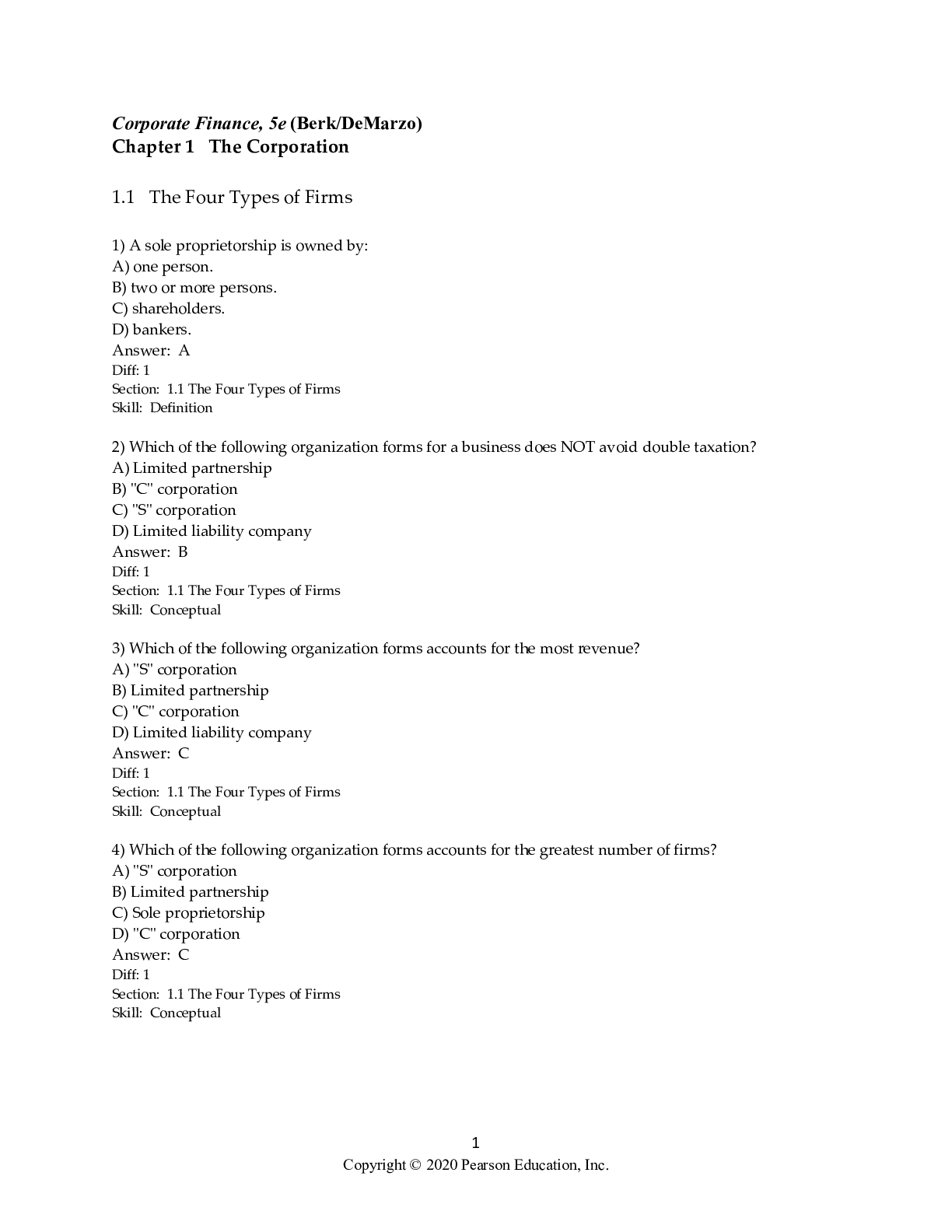
Reviews( 0 )
Document information
Connected school, study & course
About the document
Uploaded On
Sep 12, 2022
Number of pages
1007
Written in
Additional information
This document has been written for:
Uploaded
Sep 12, 2022
Downloads
0
Views
103

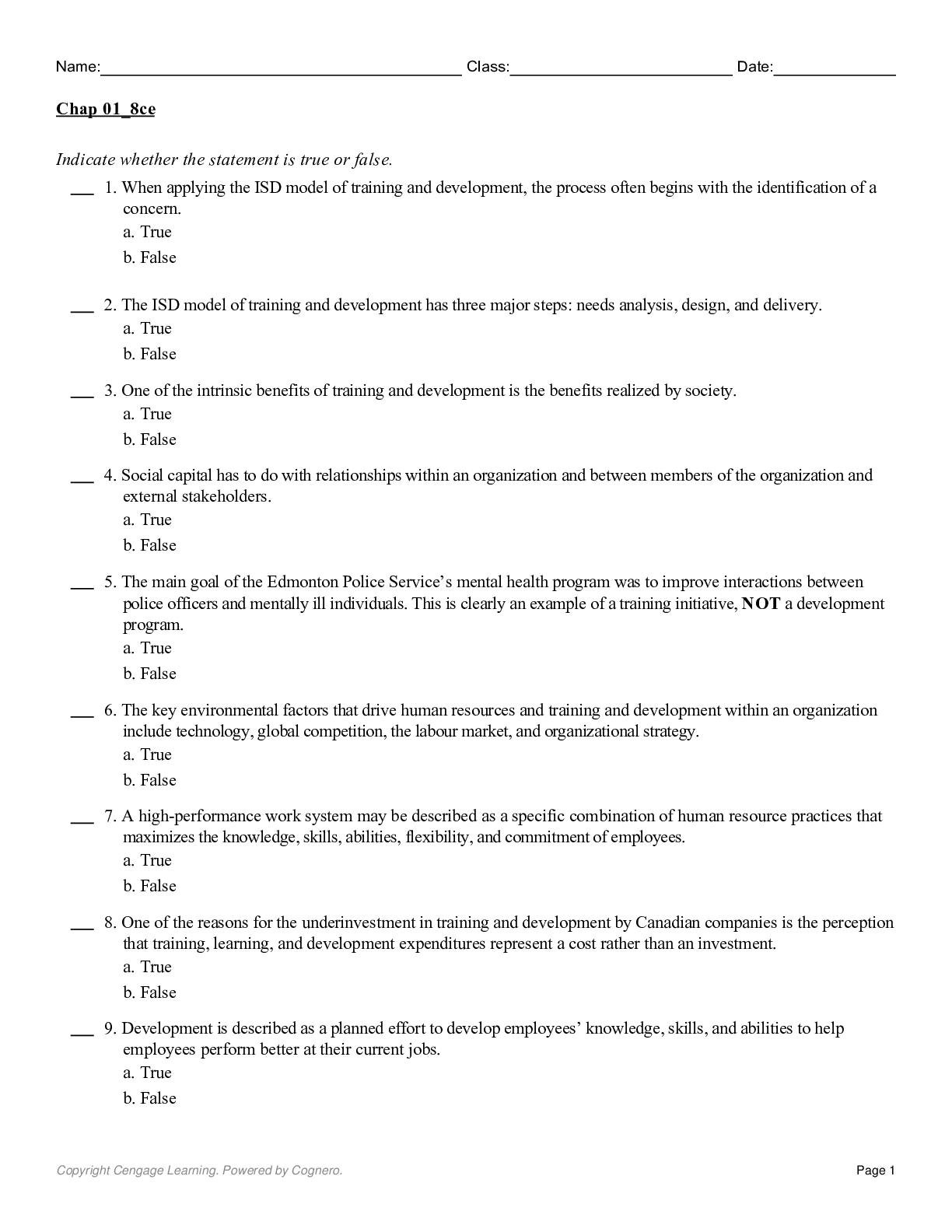
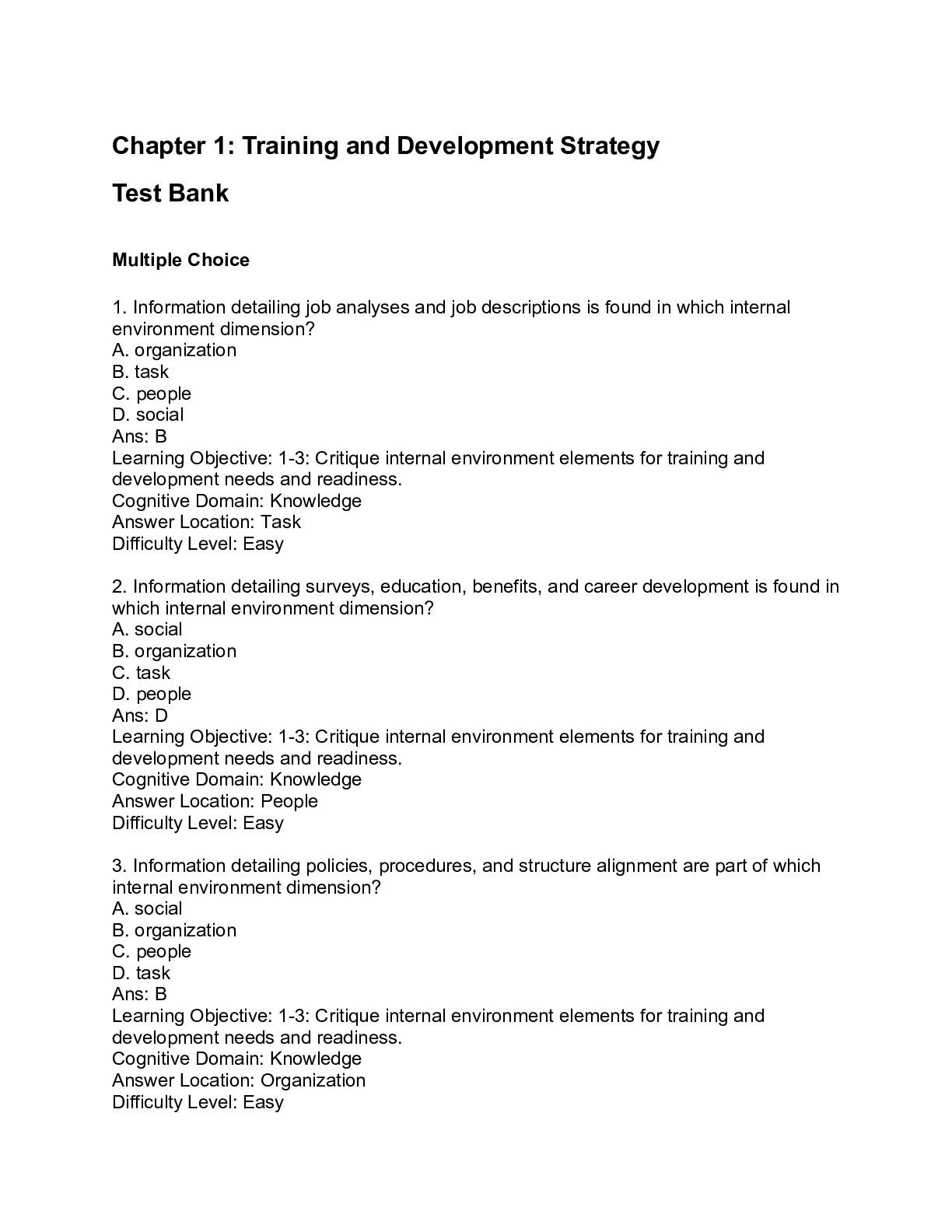
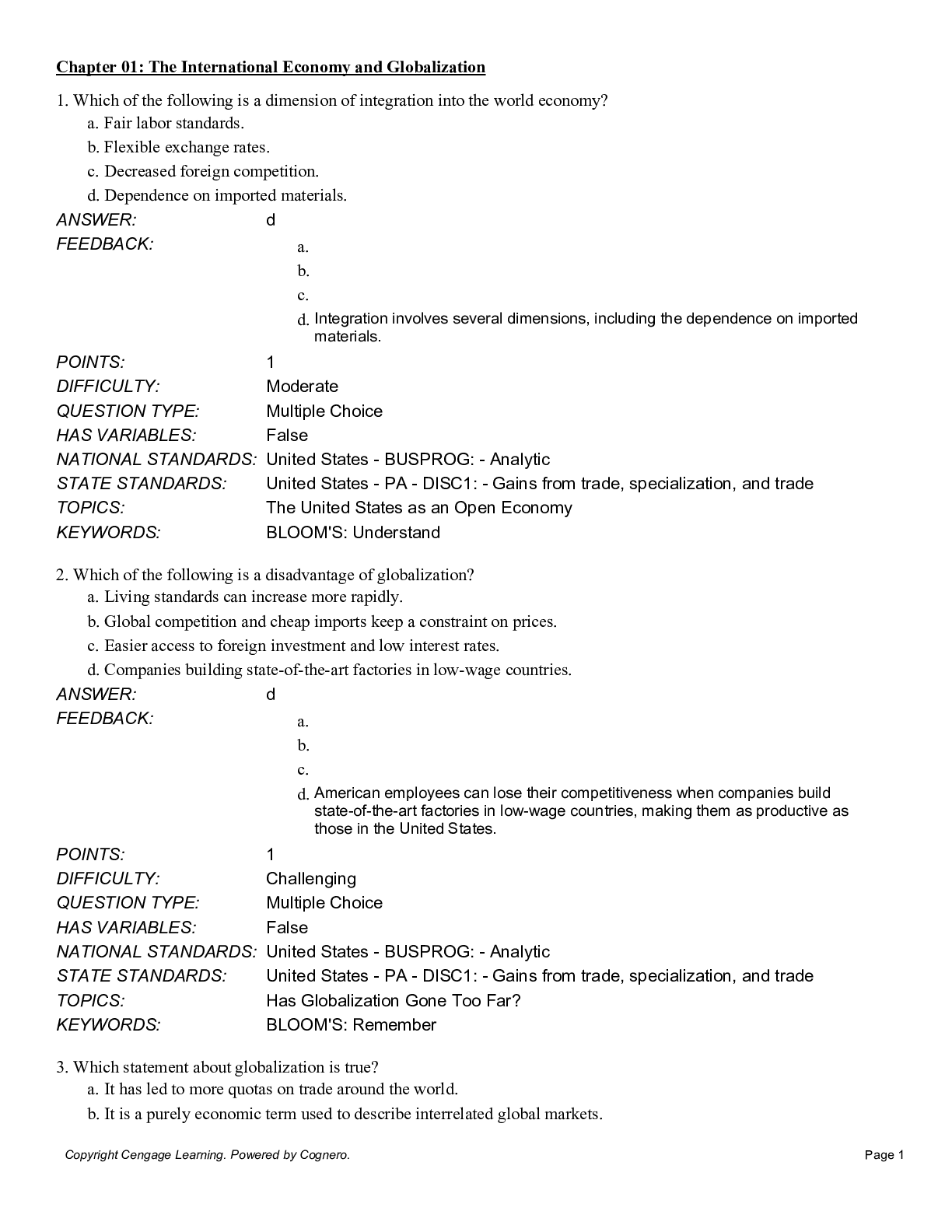
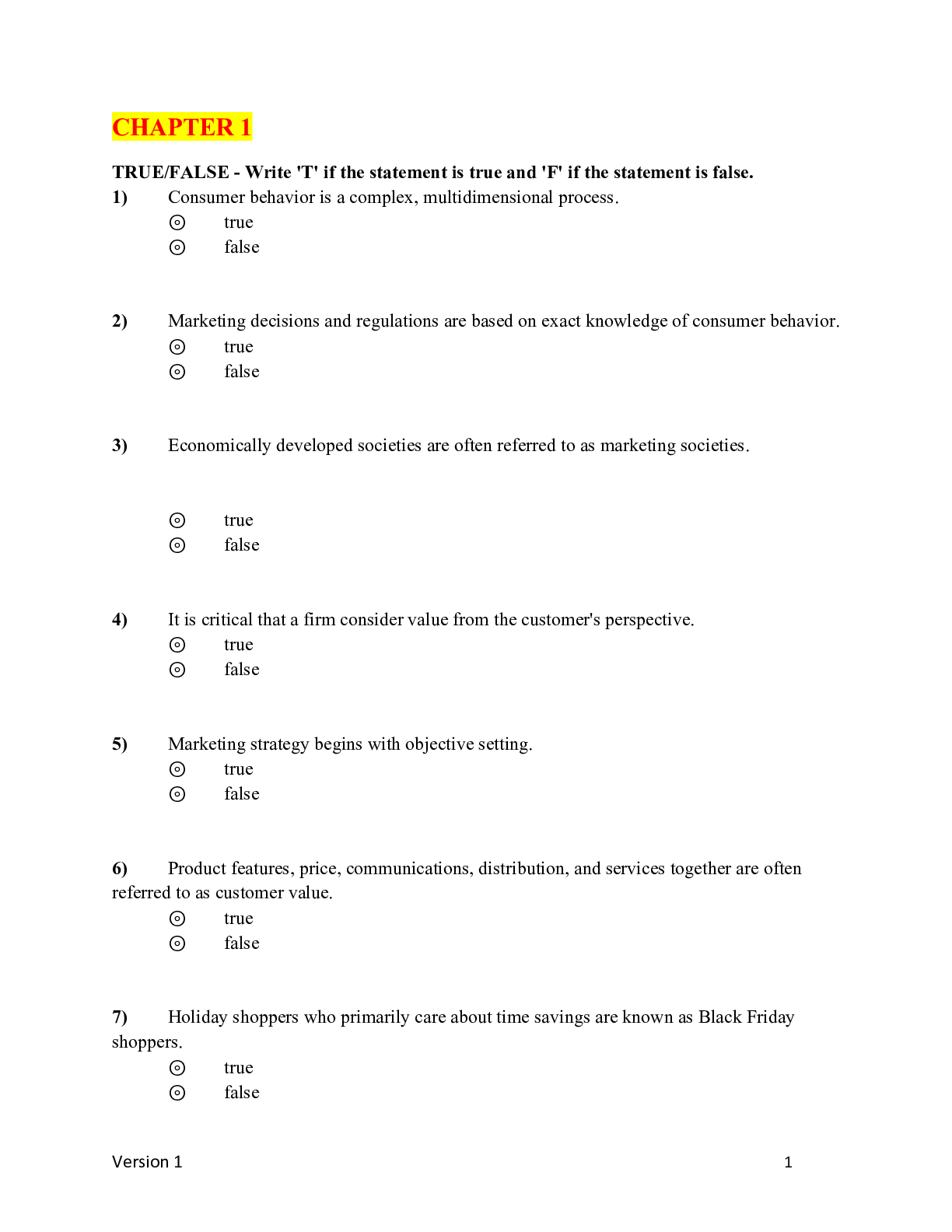
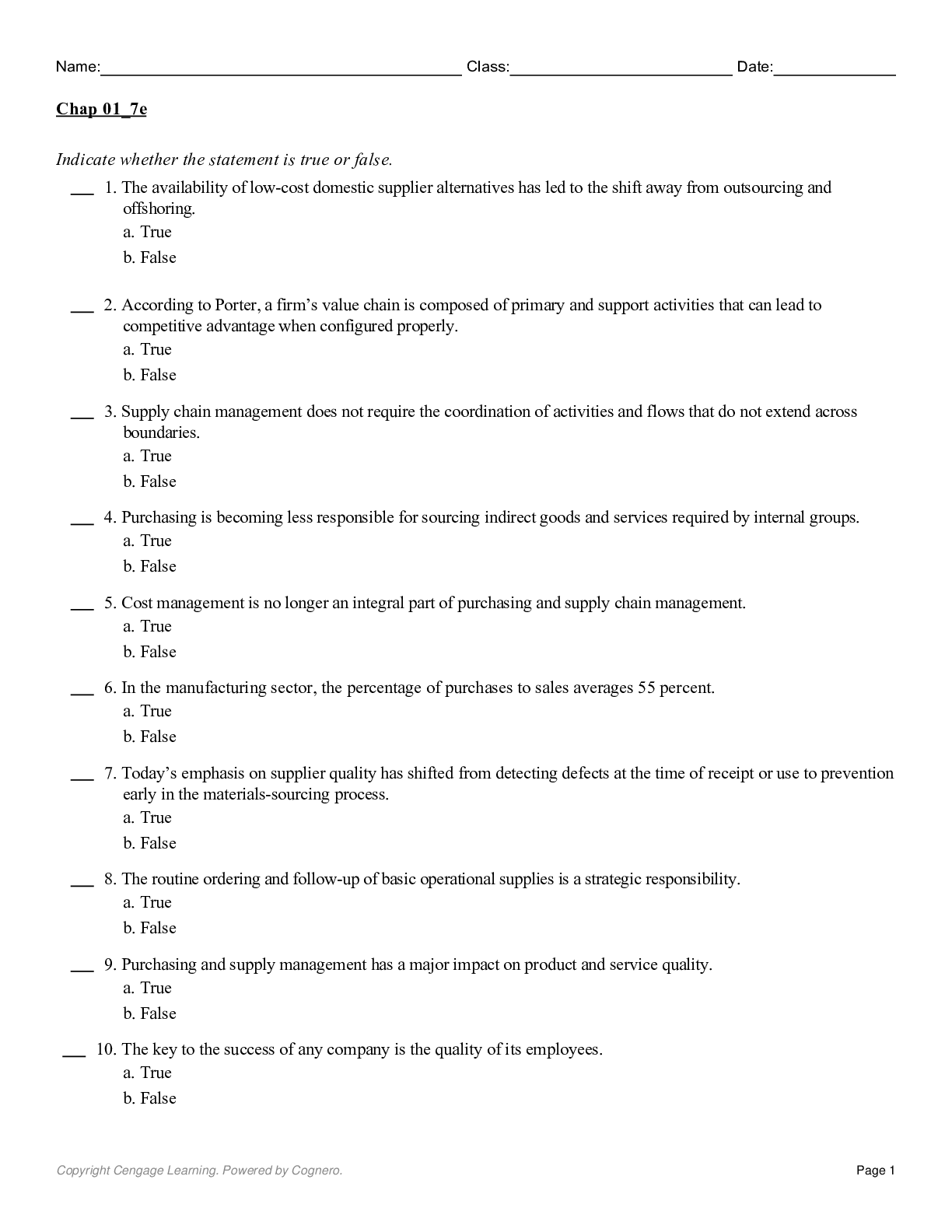
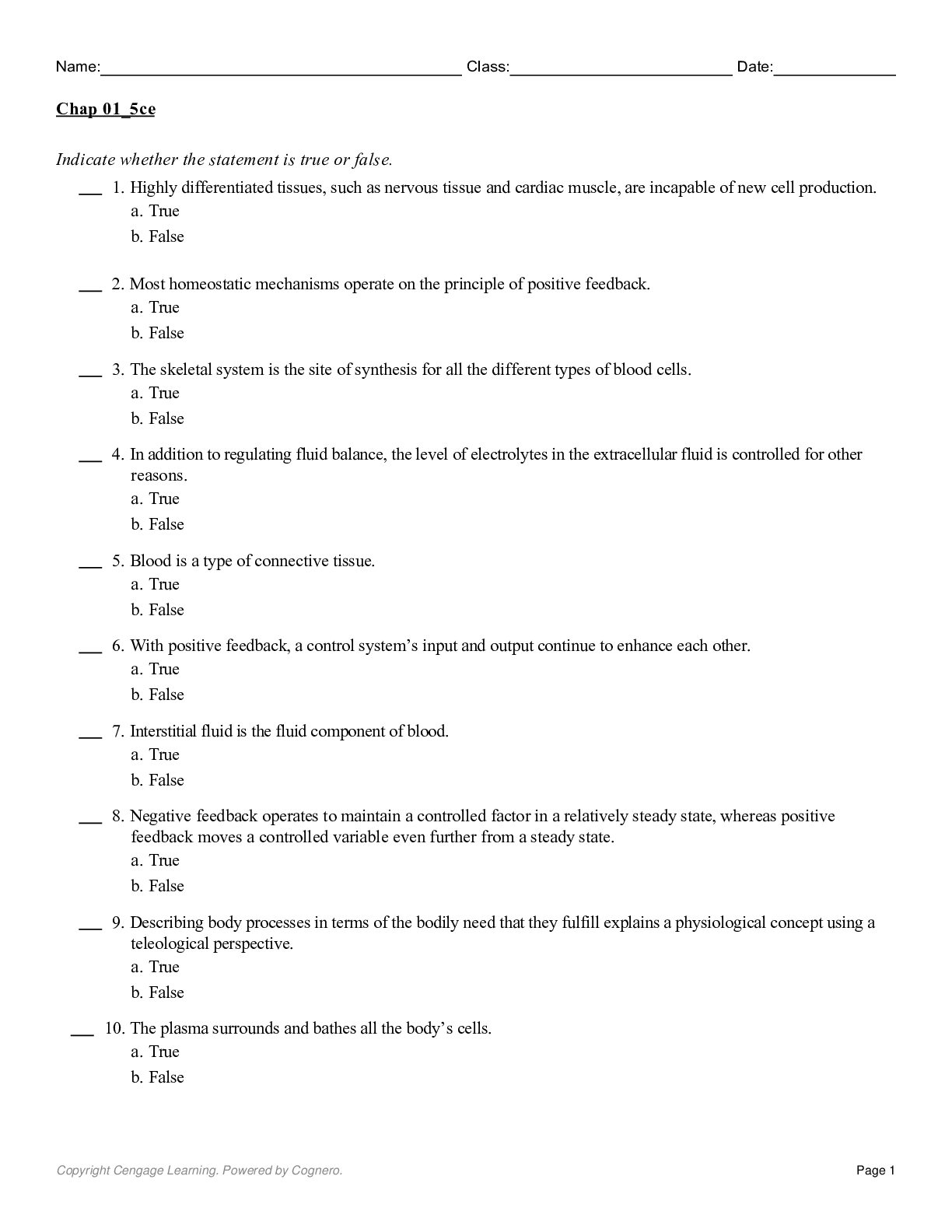

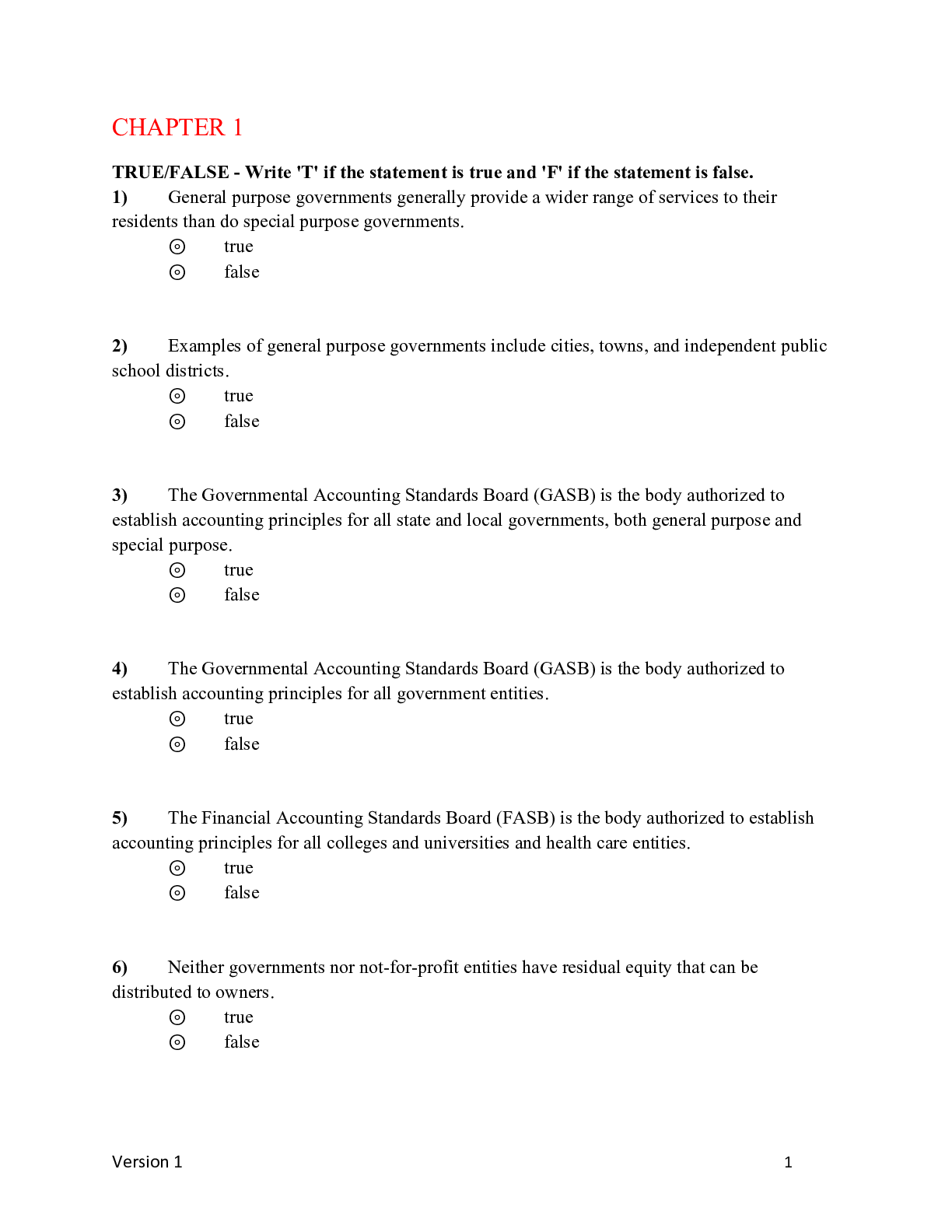
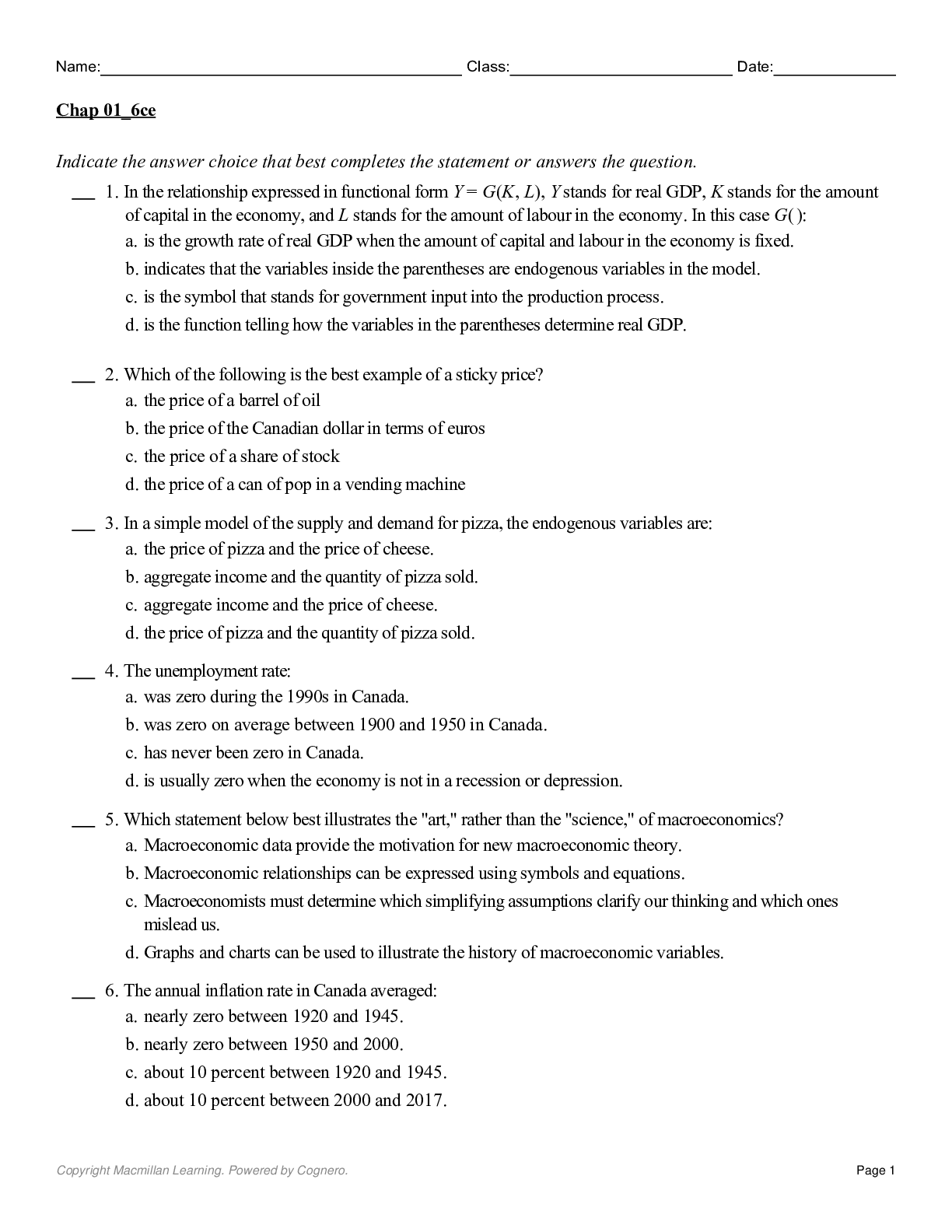
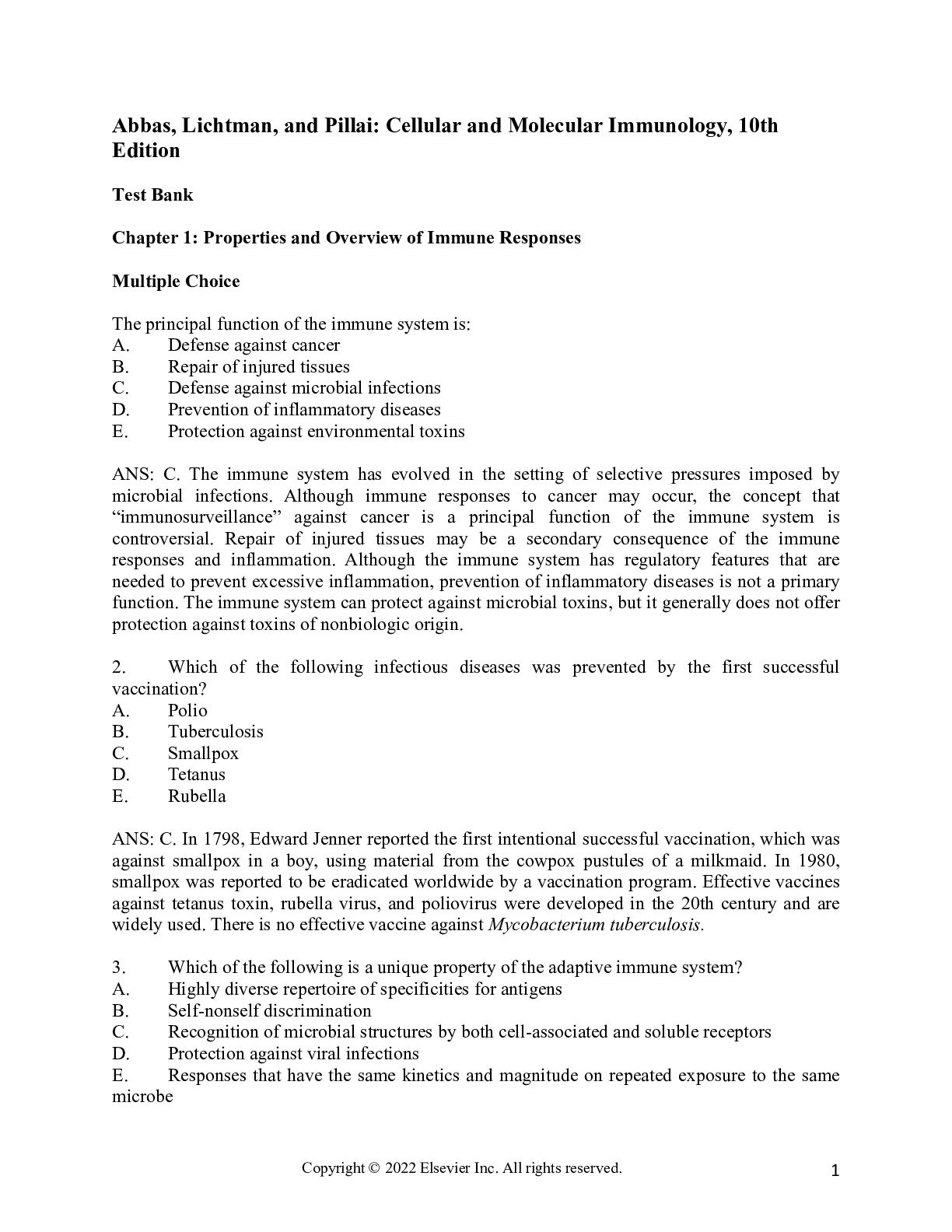

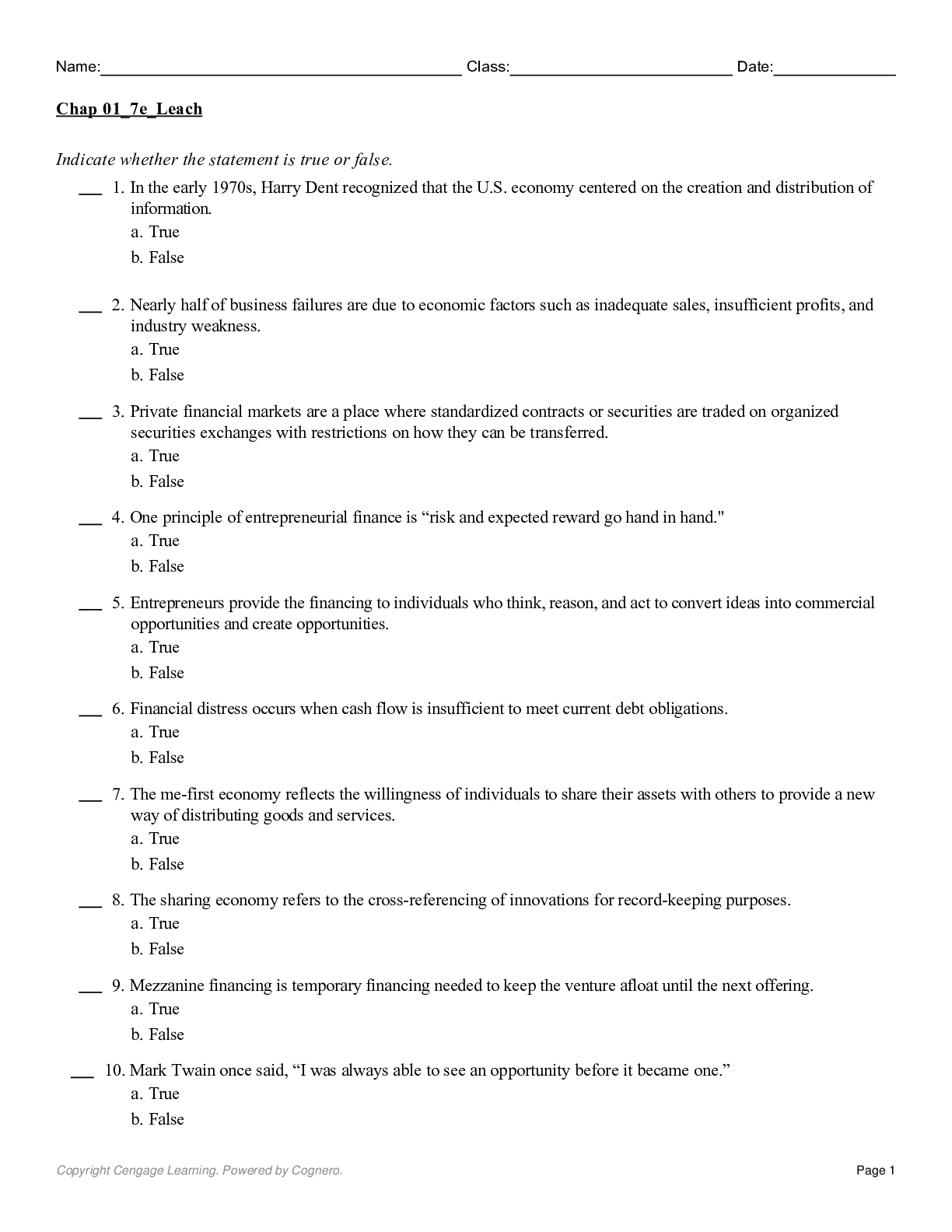
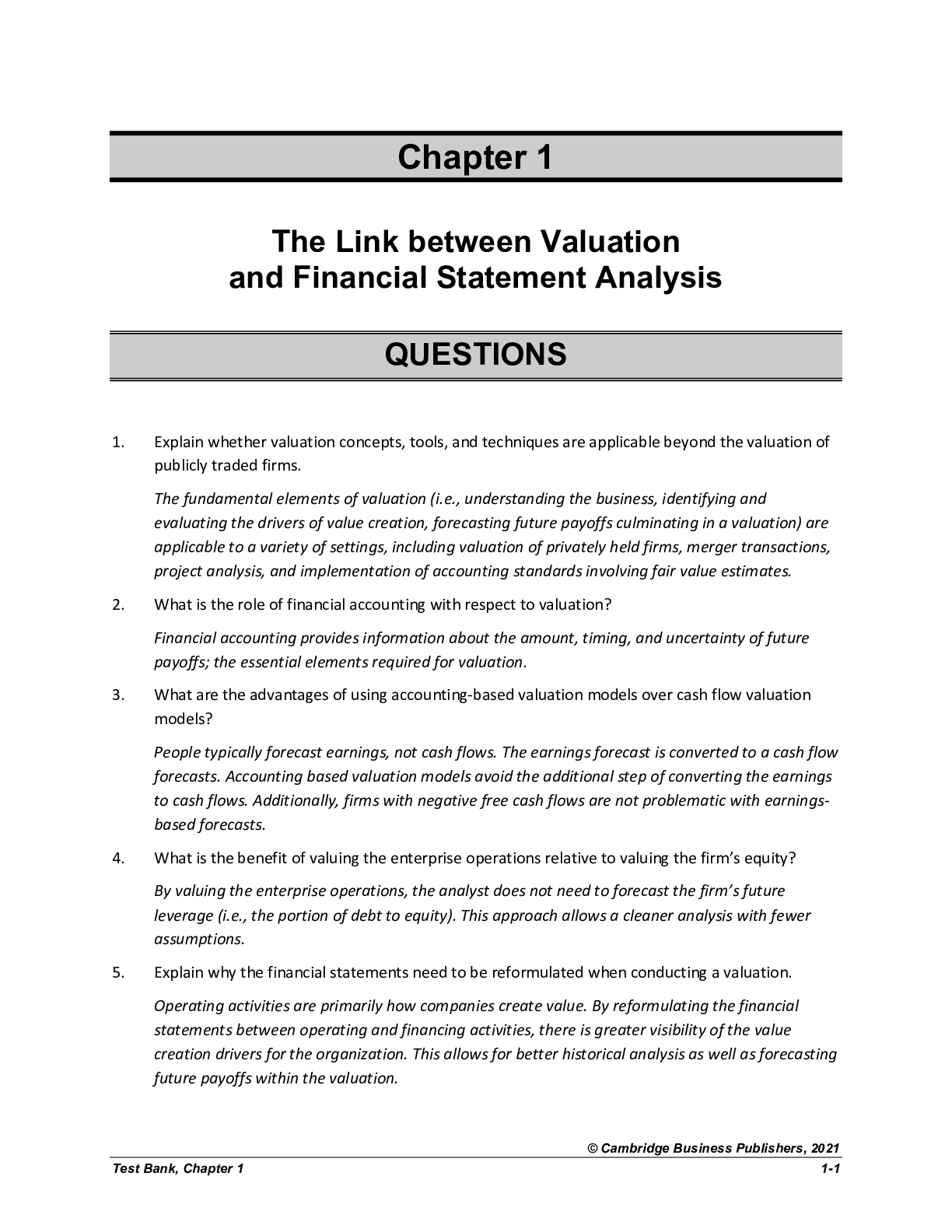
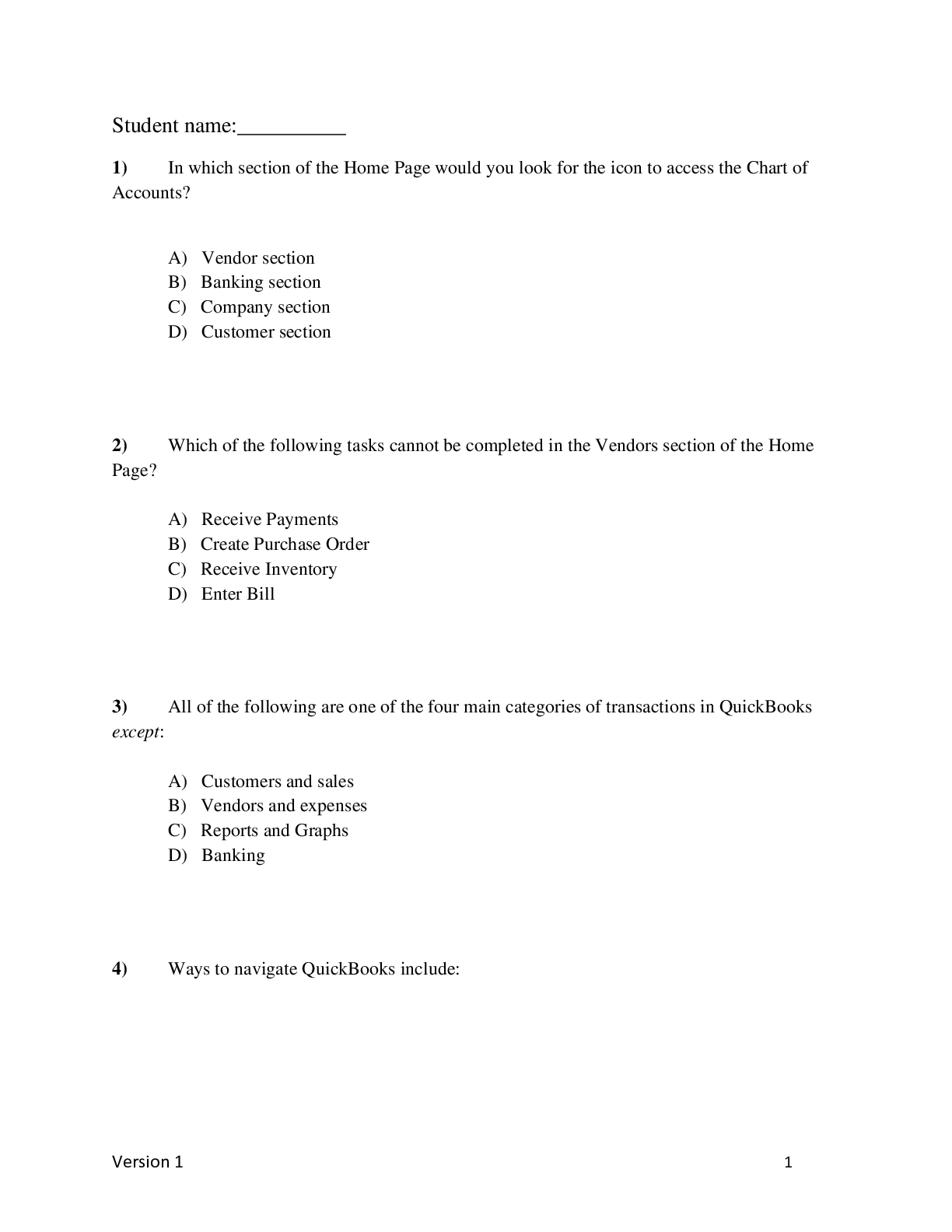
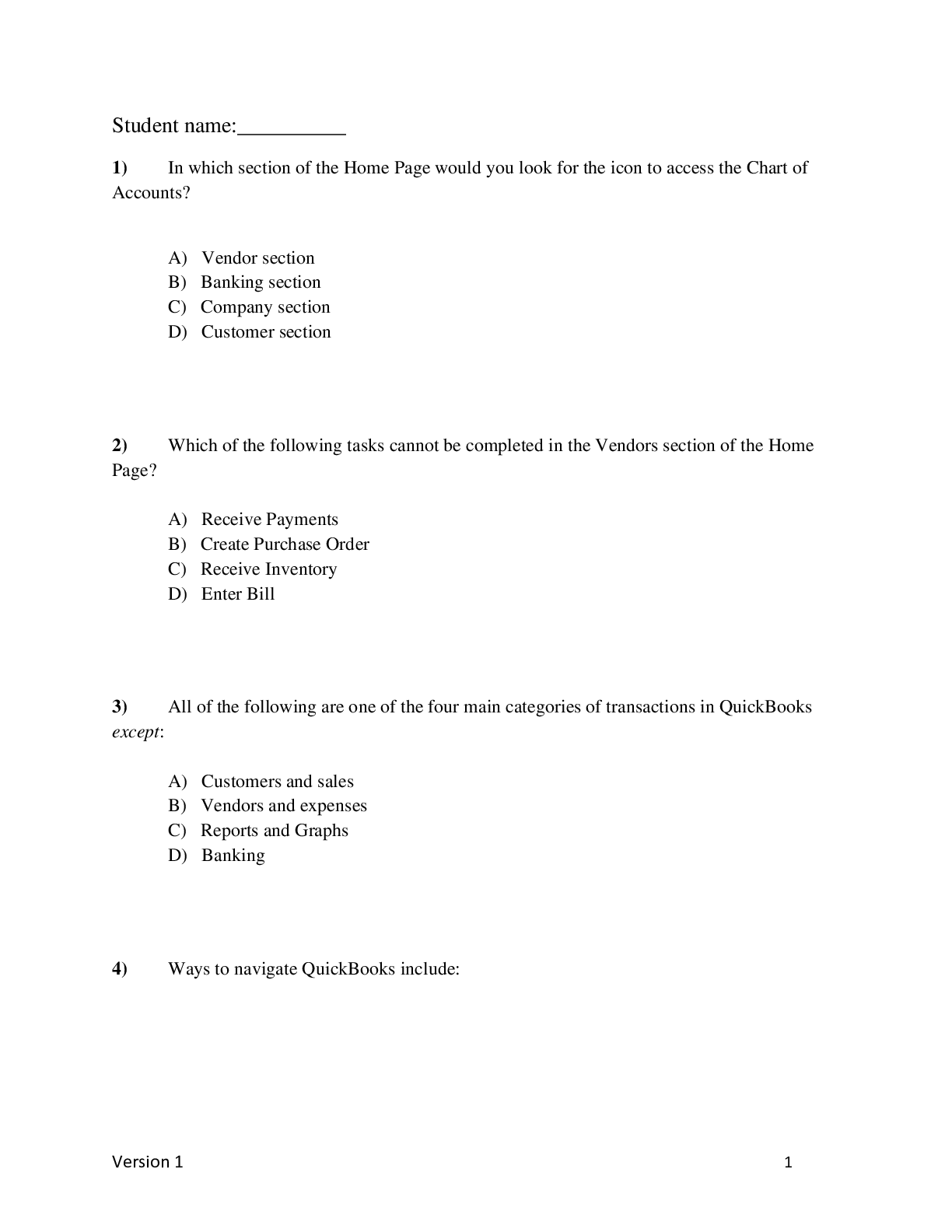
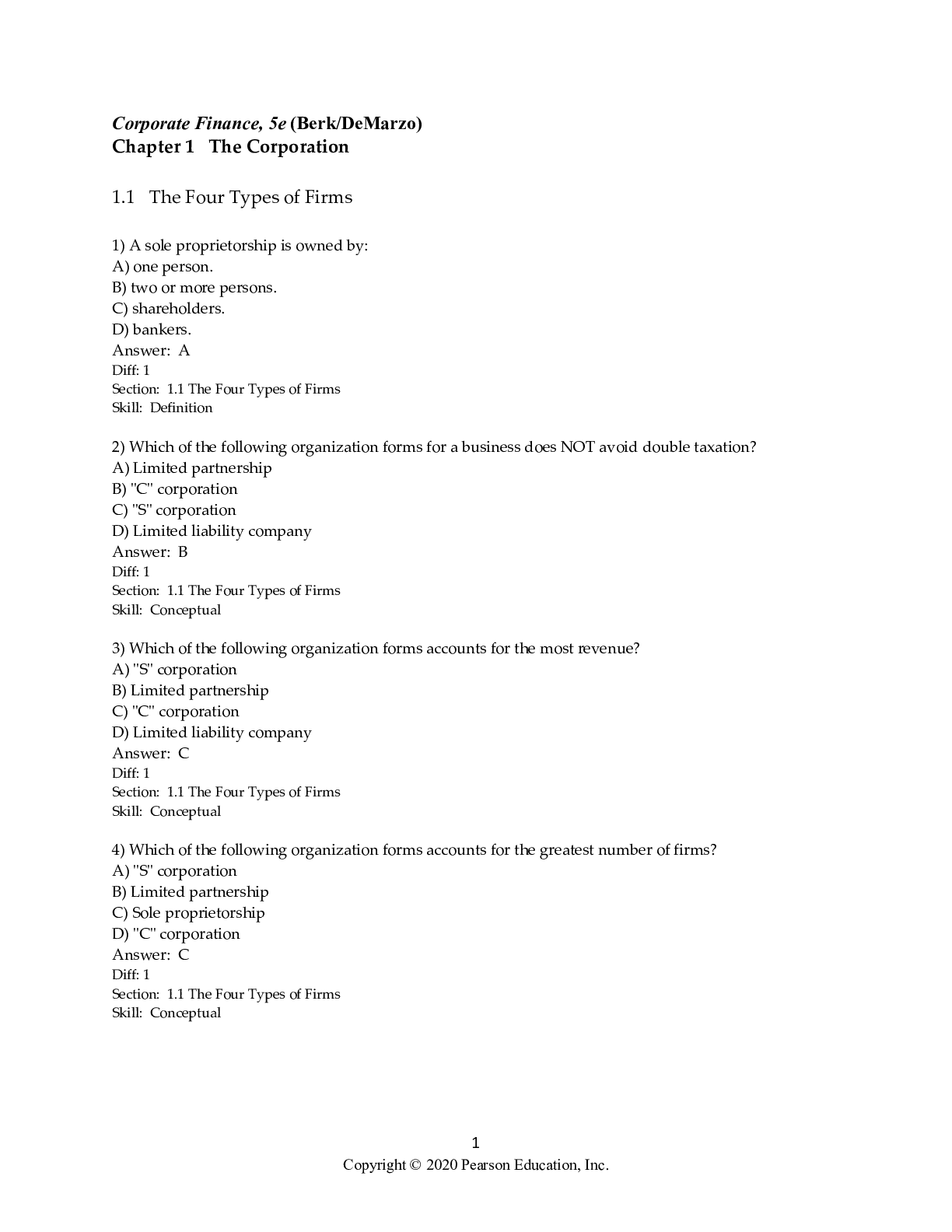
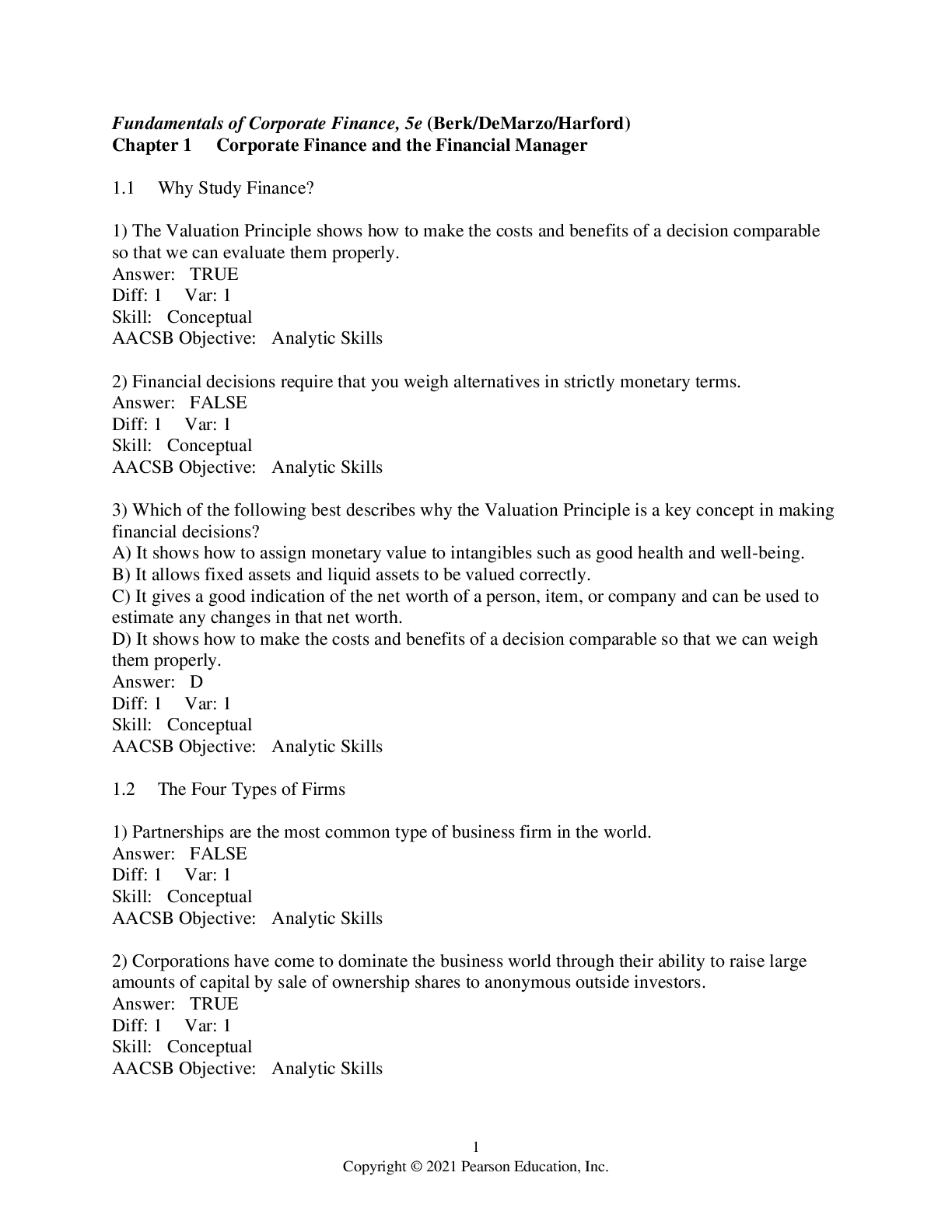
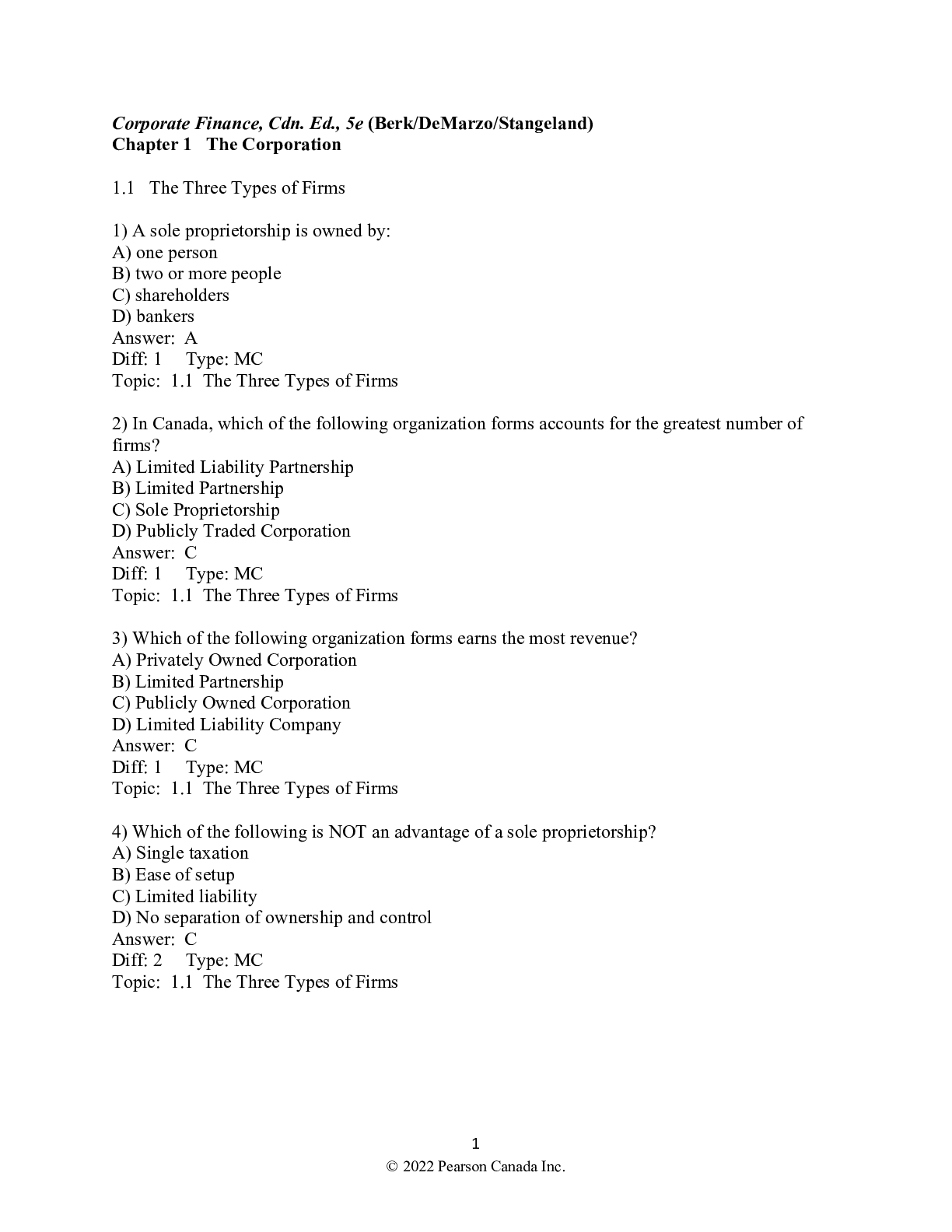

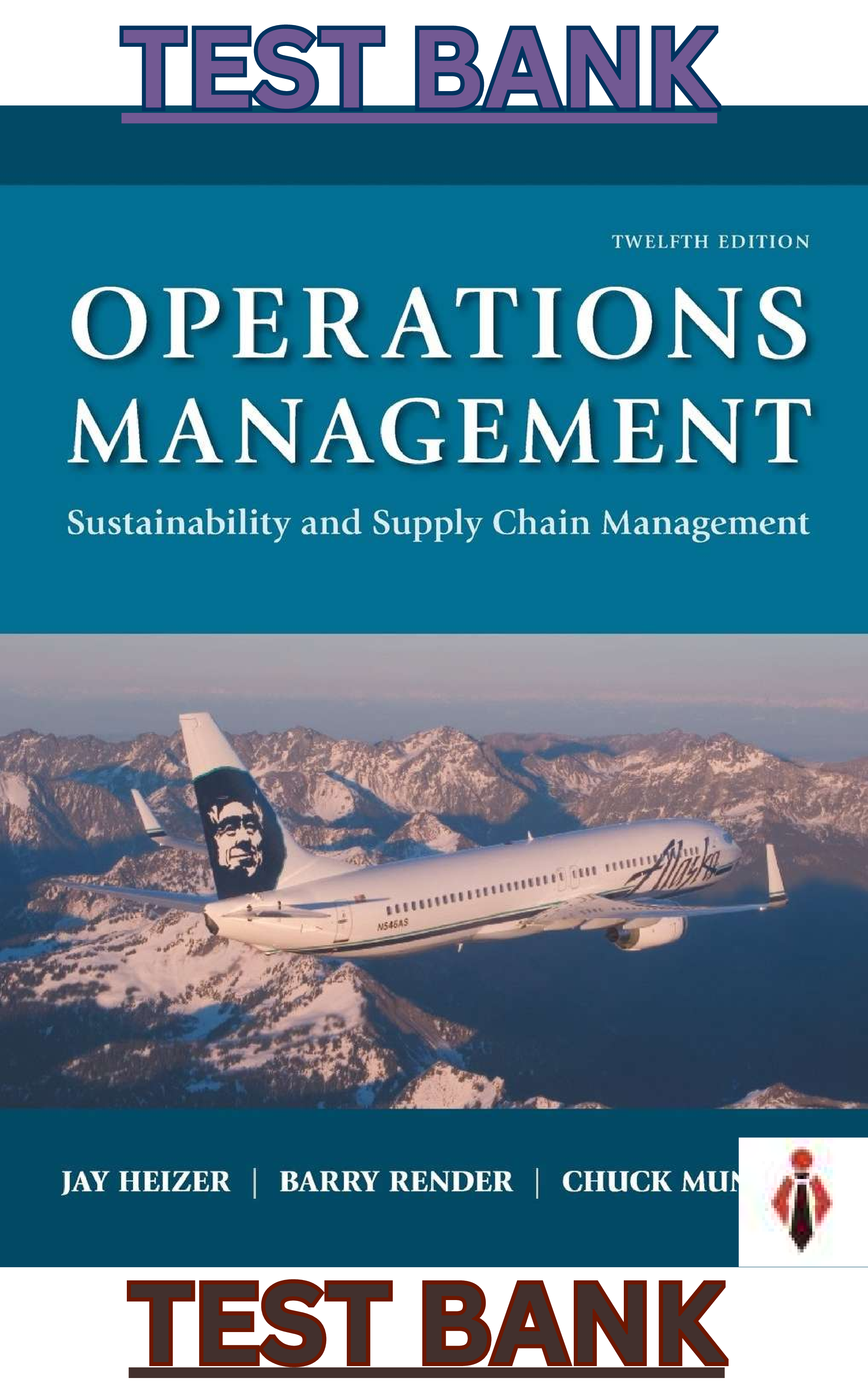
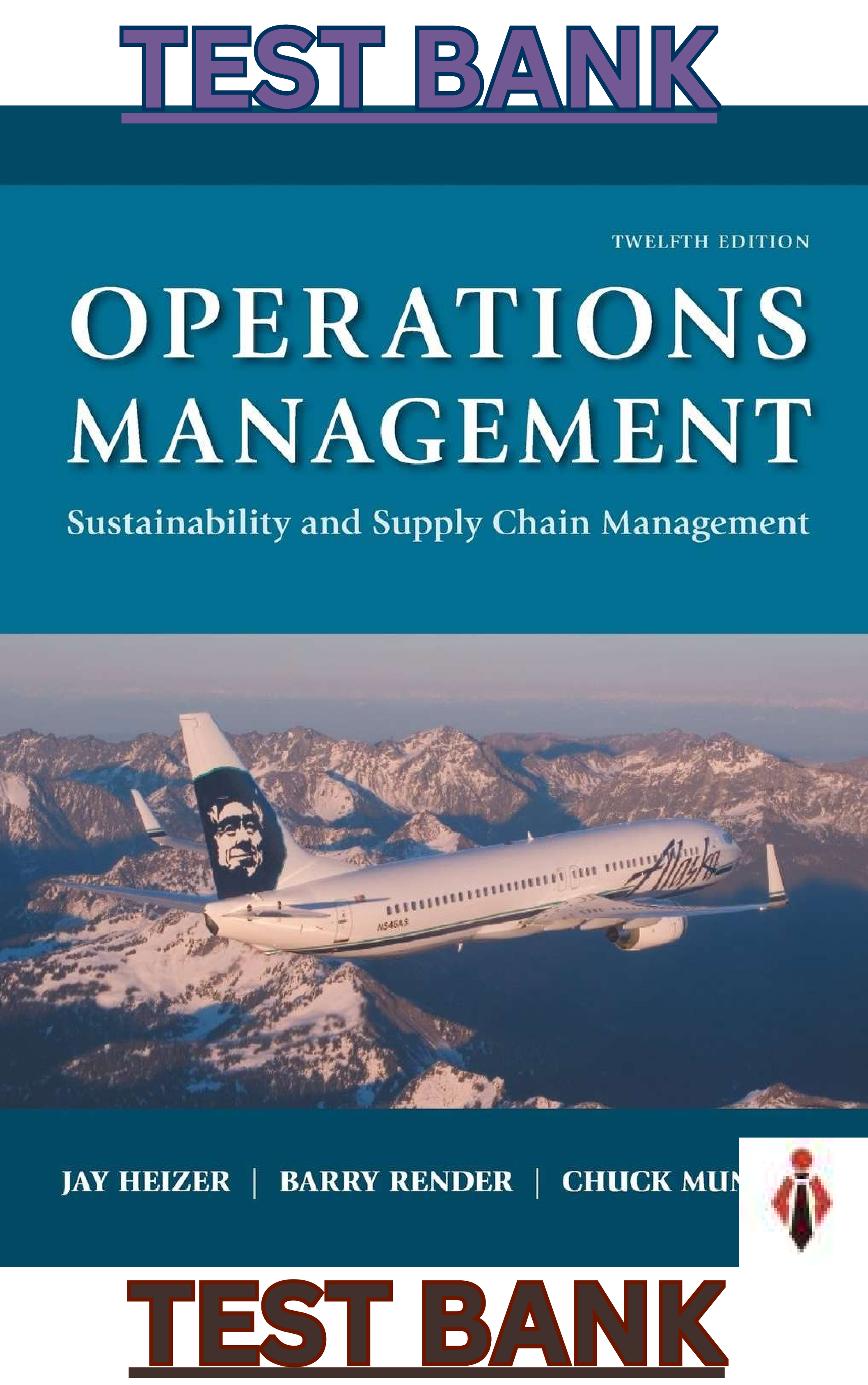
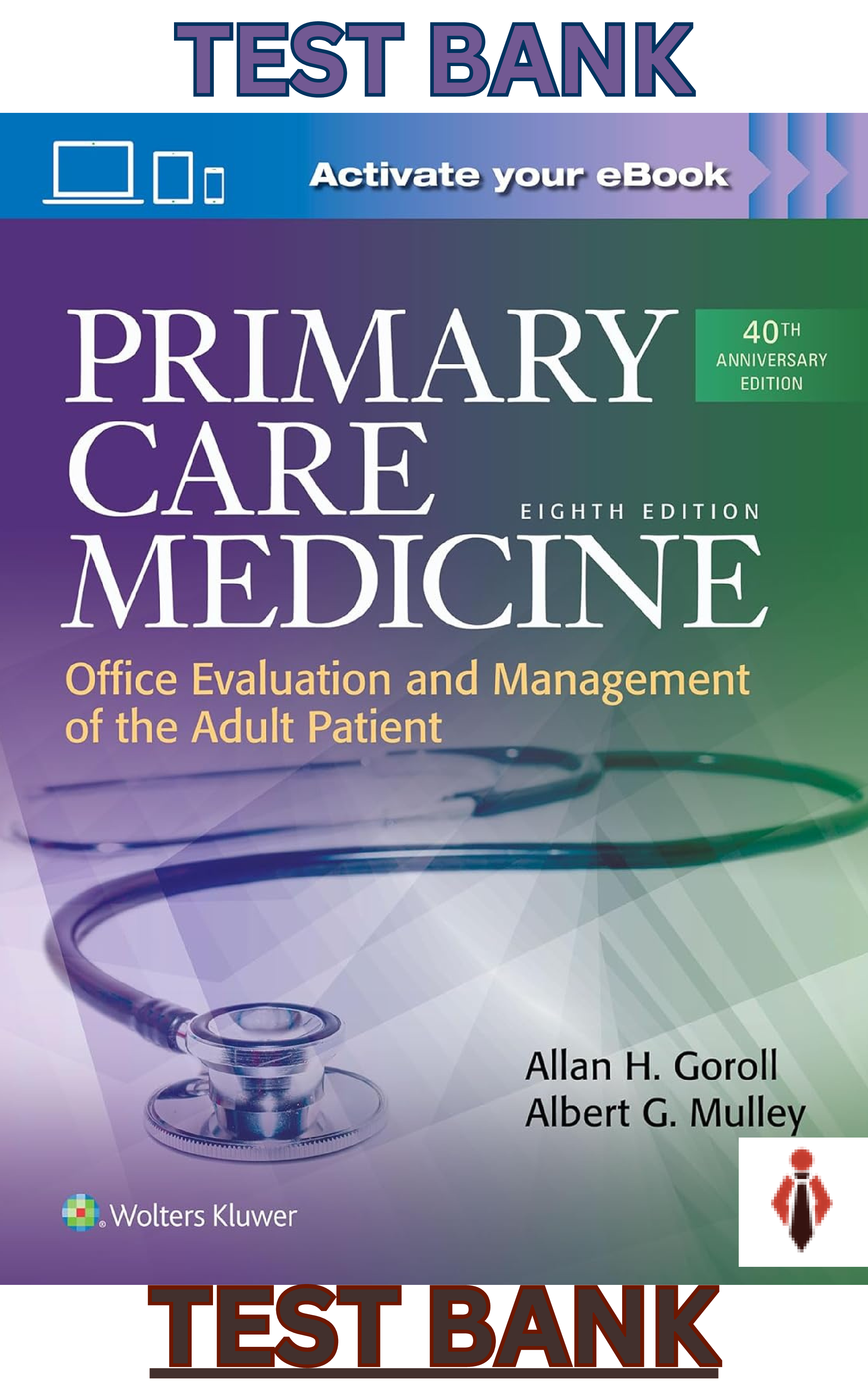

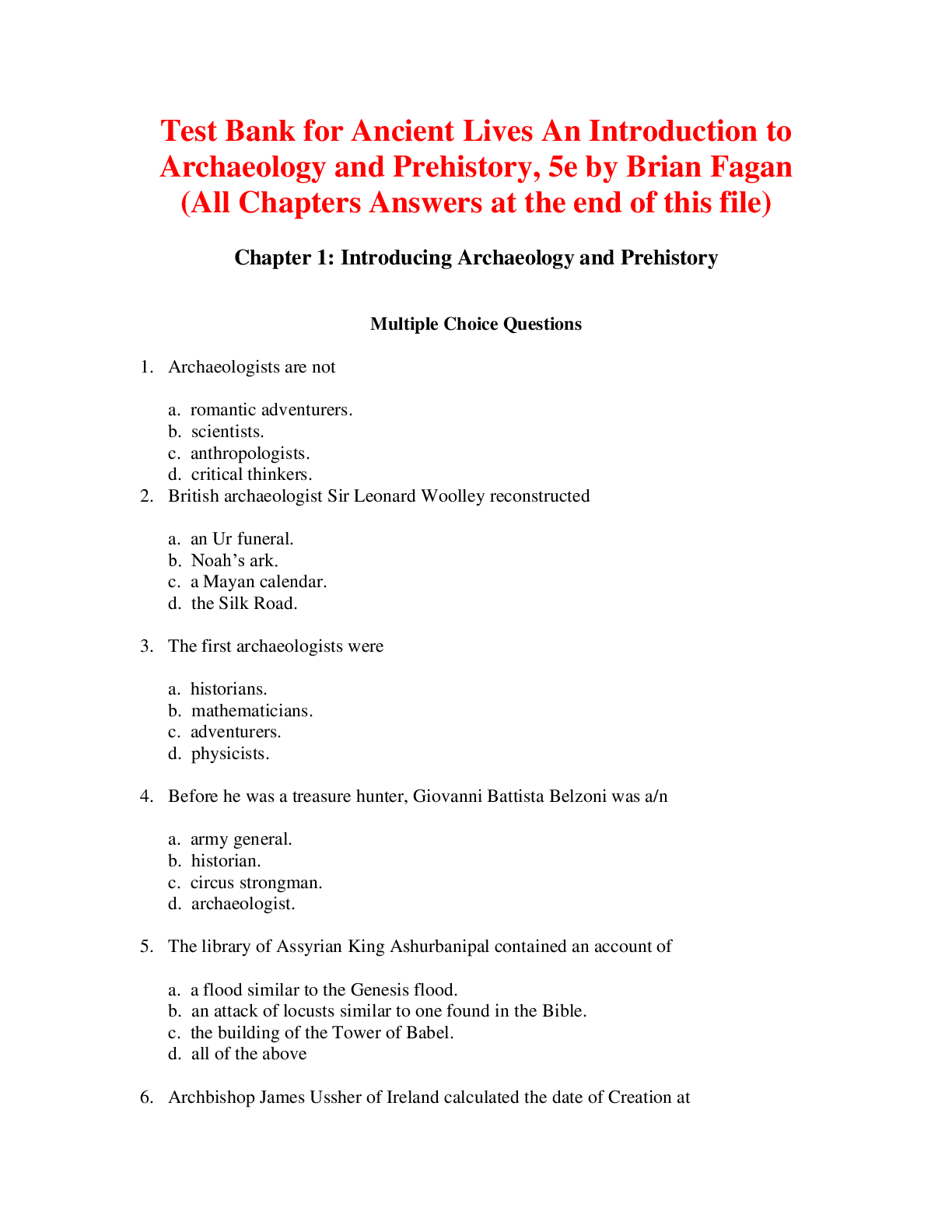
.png)
